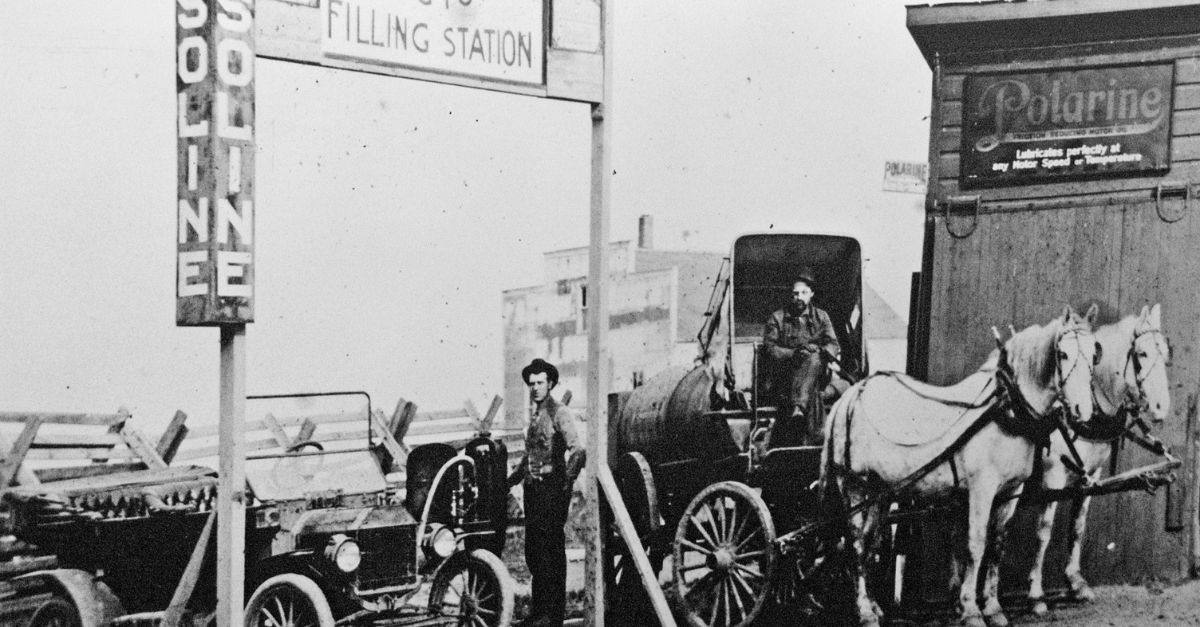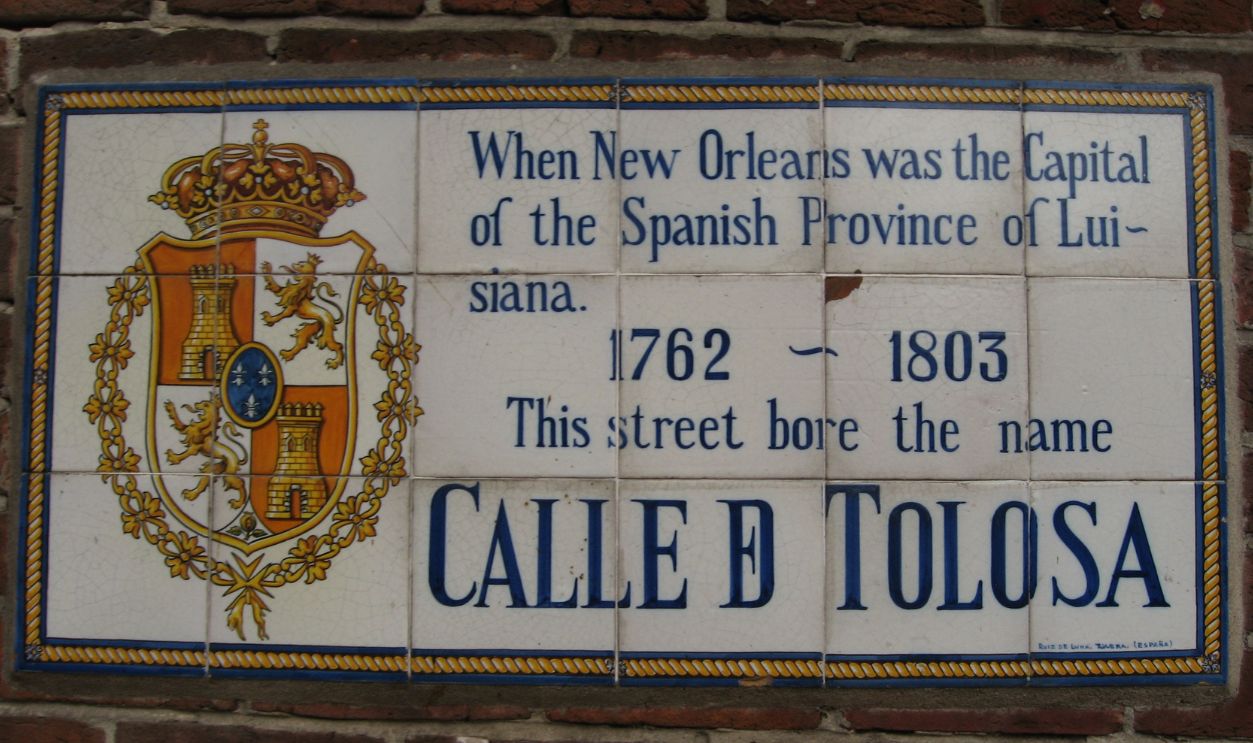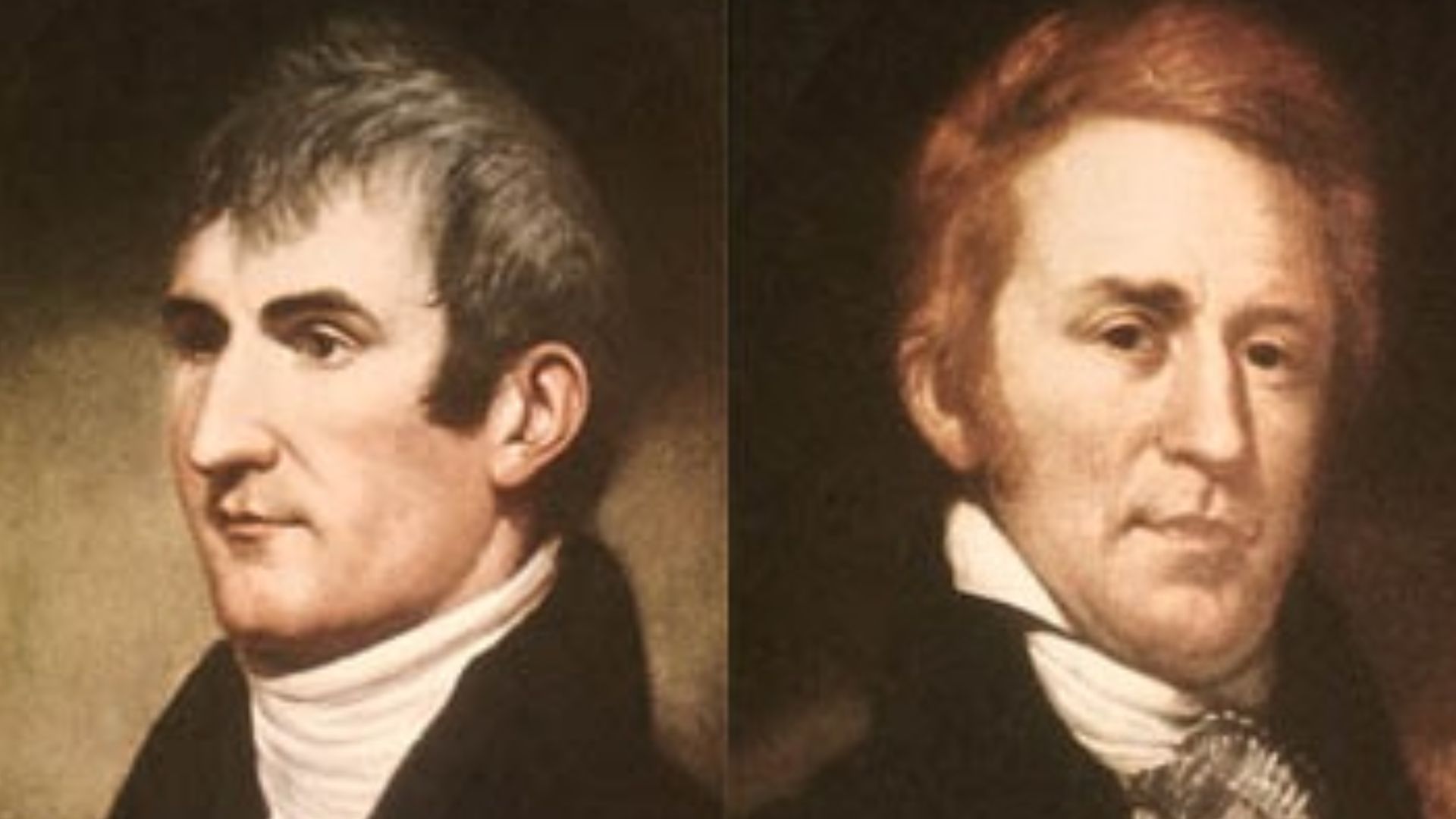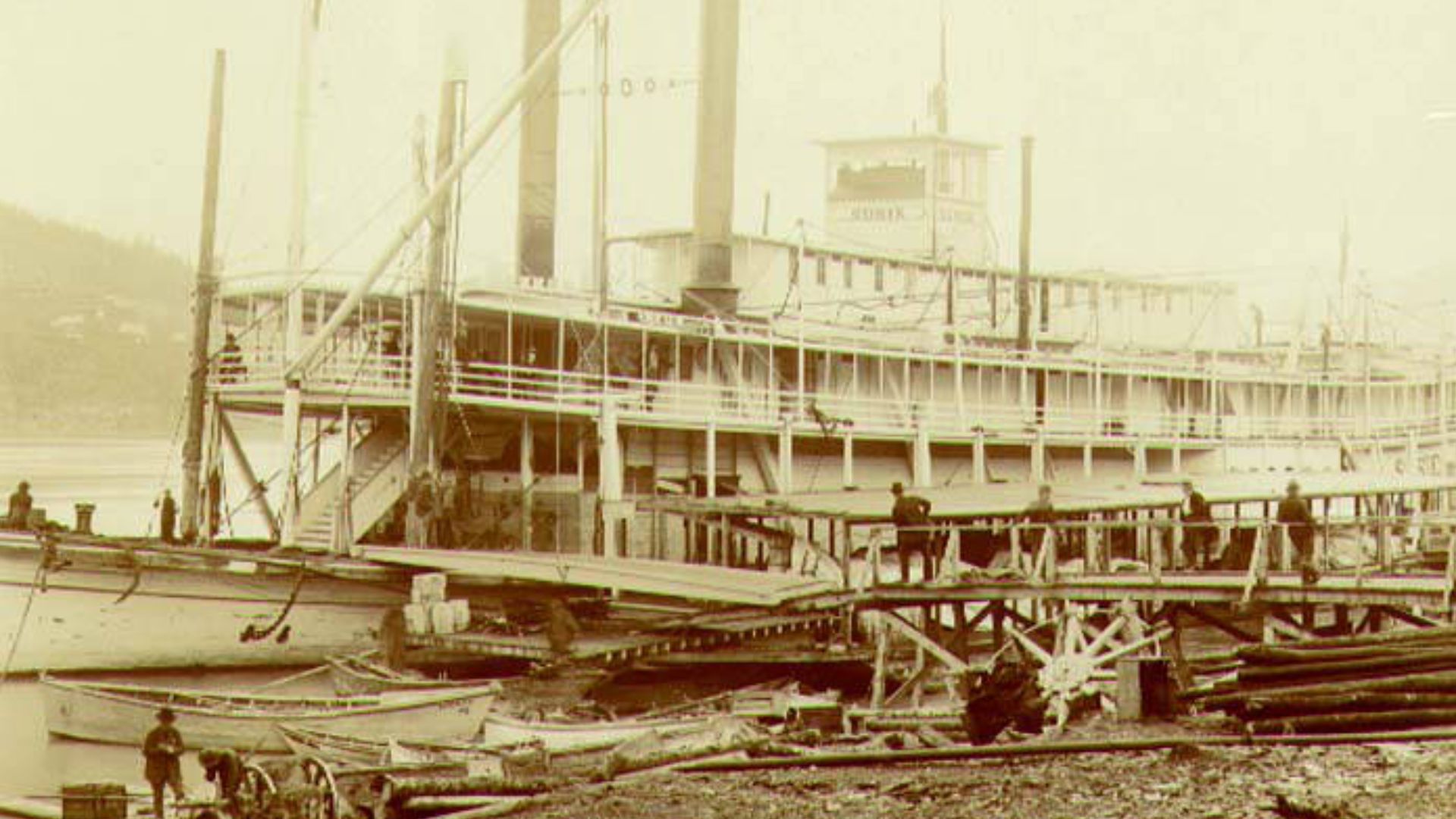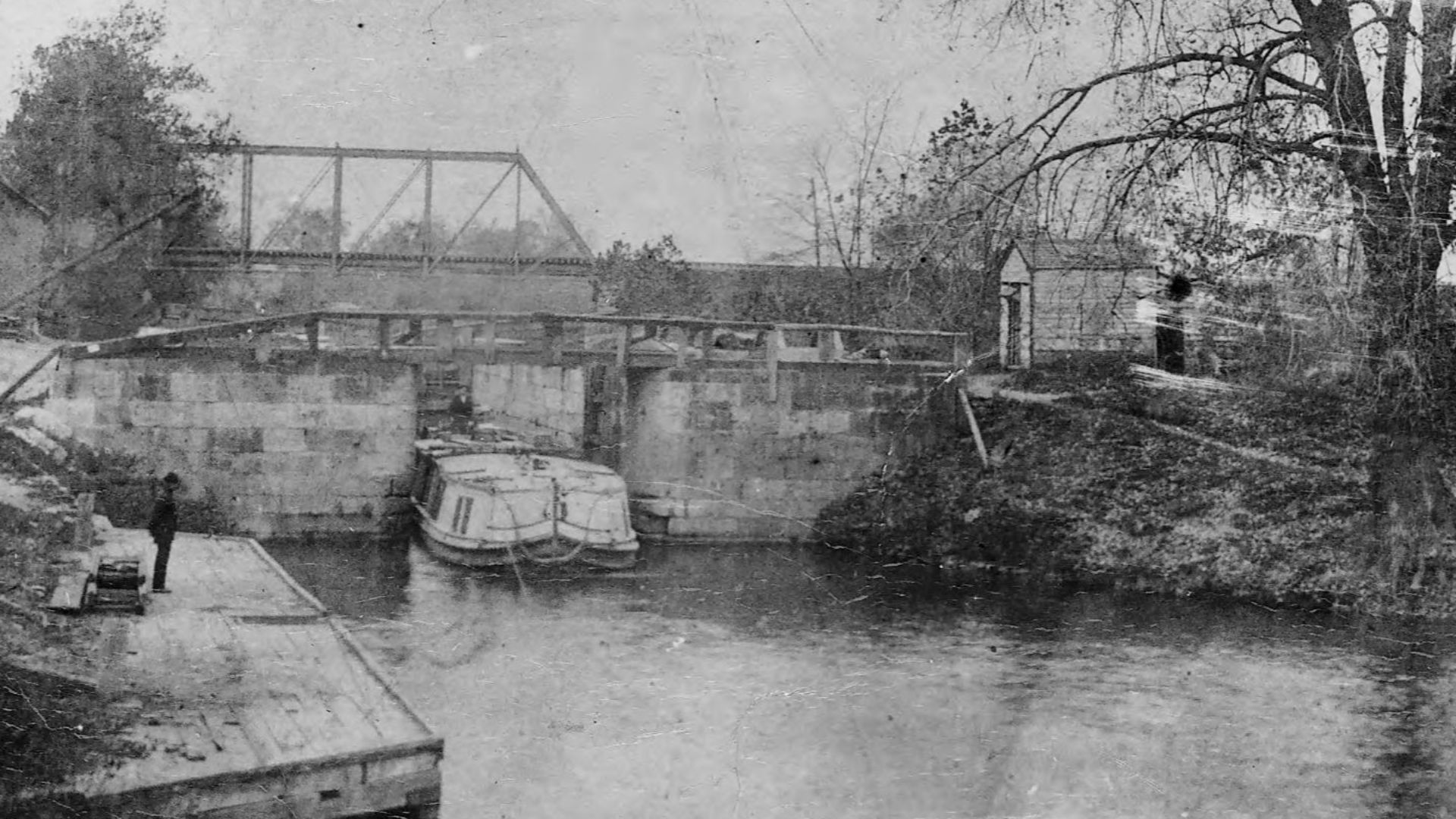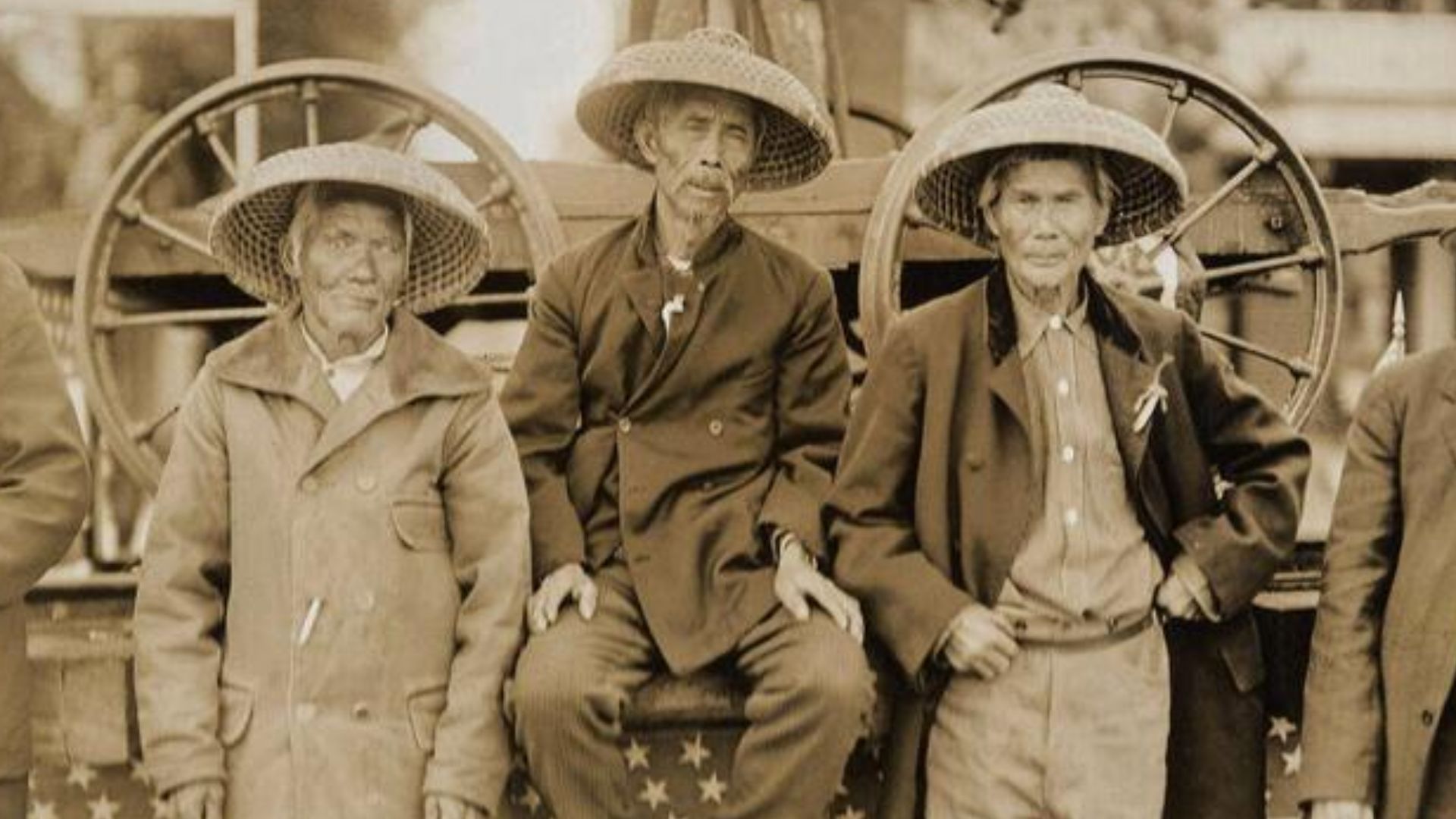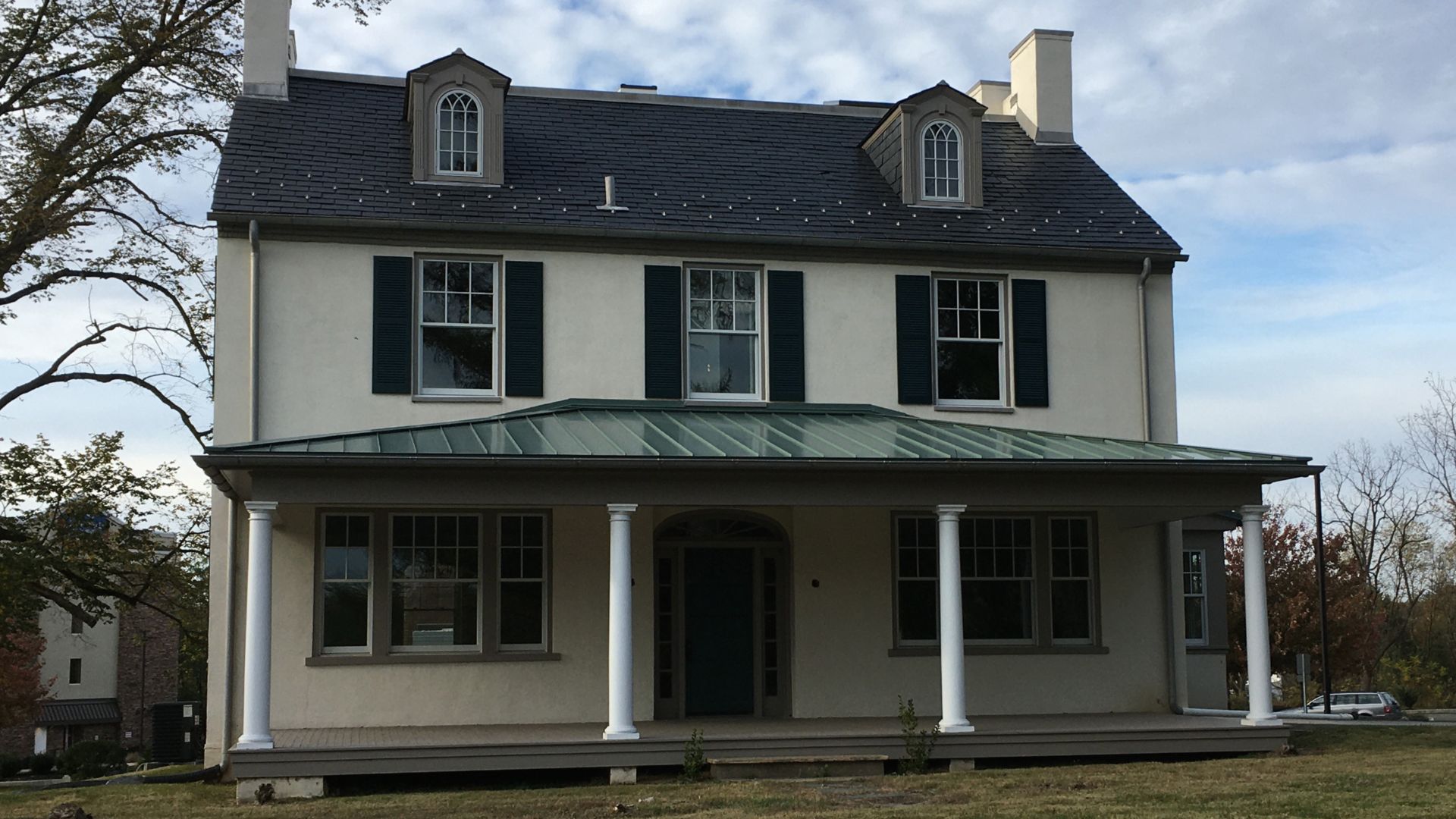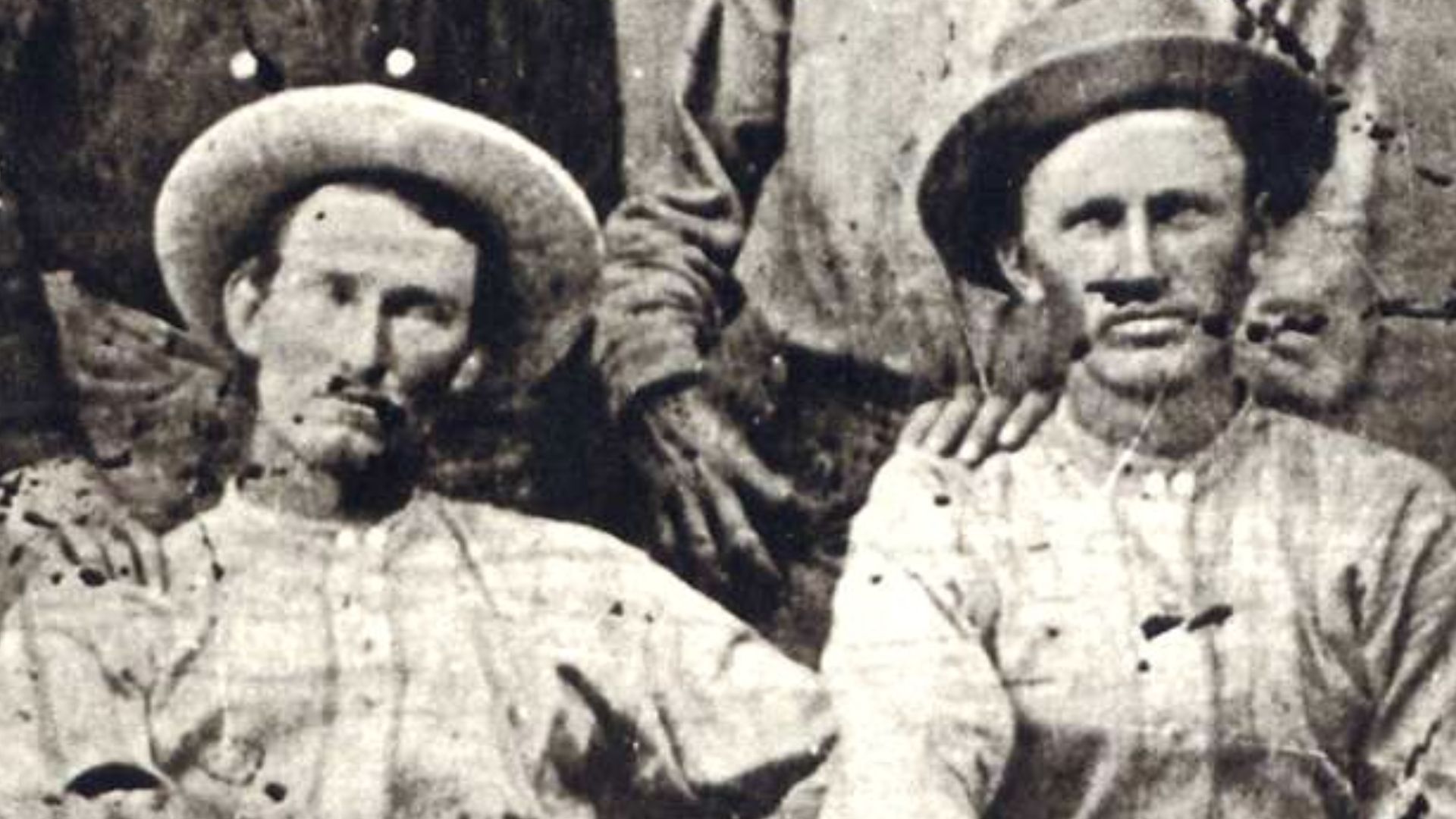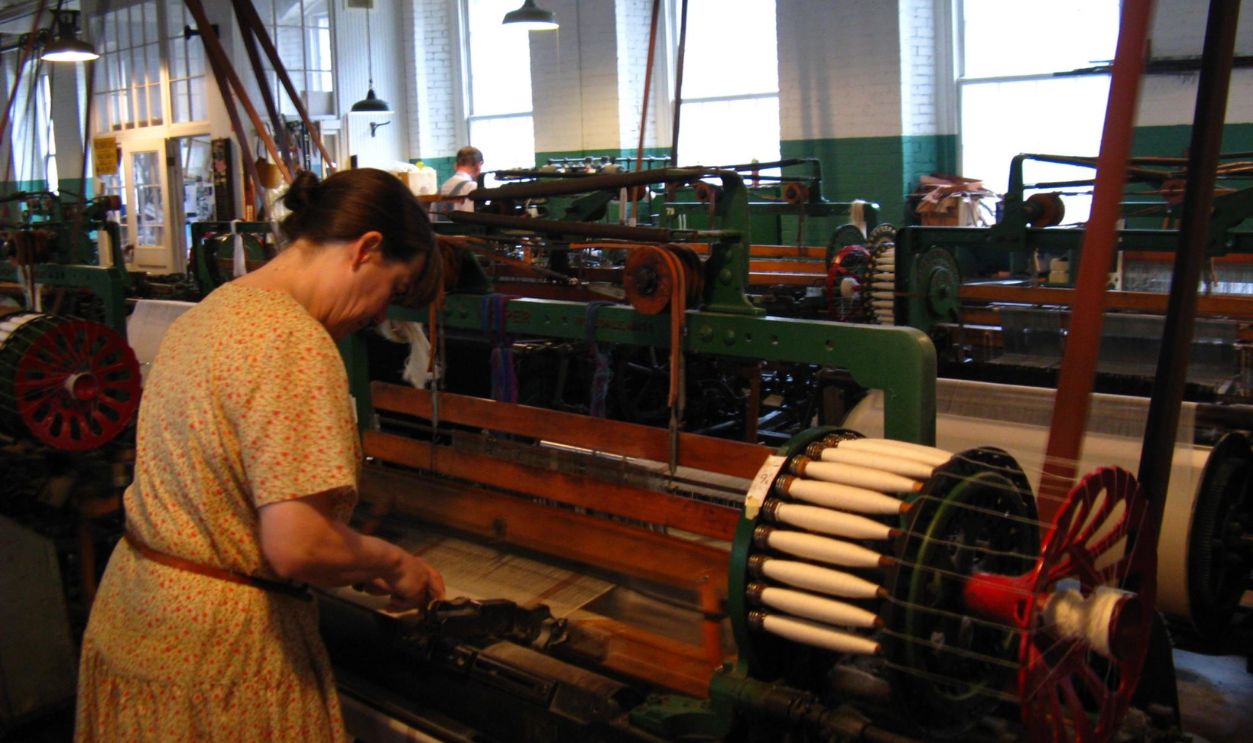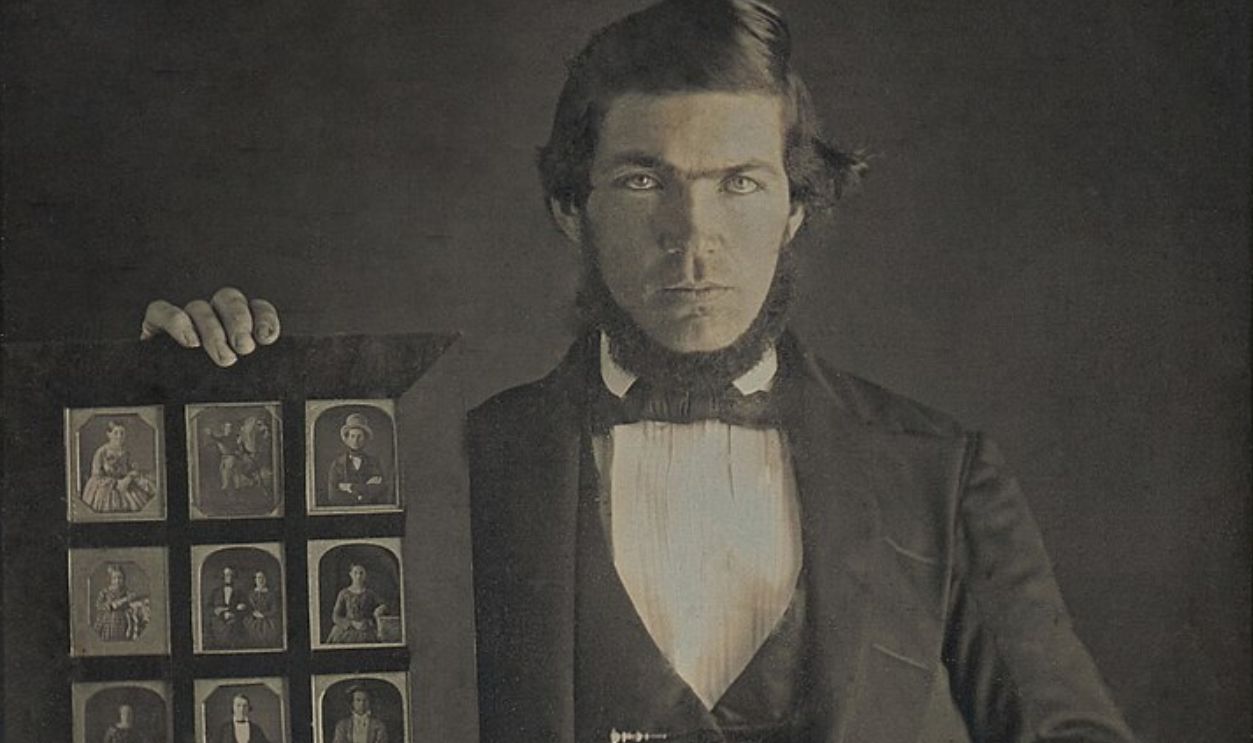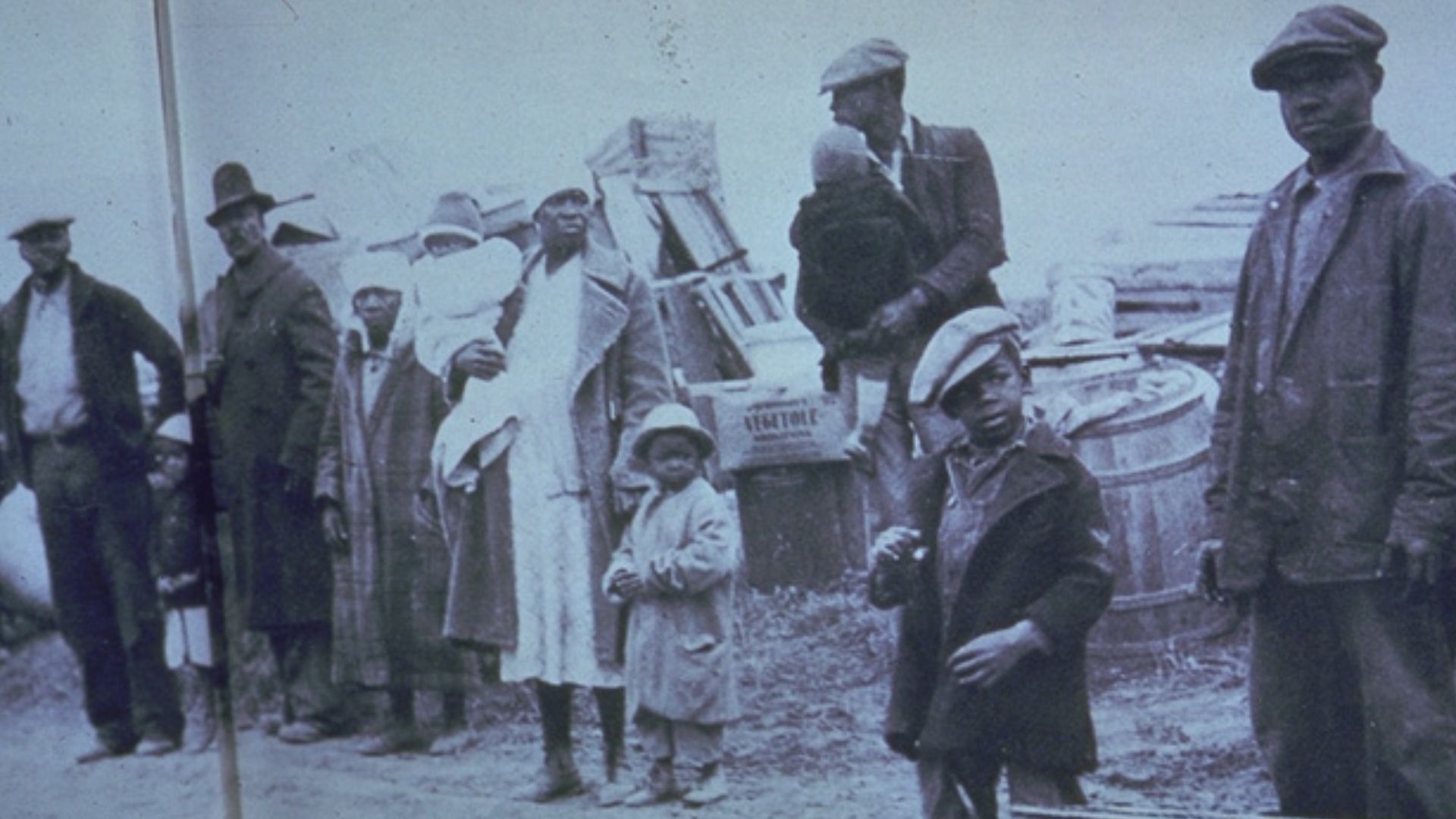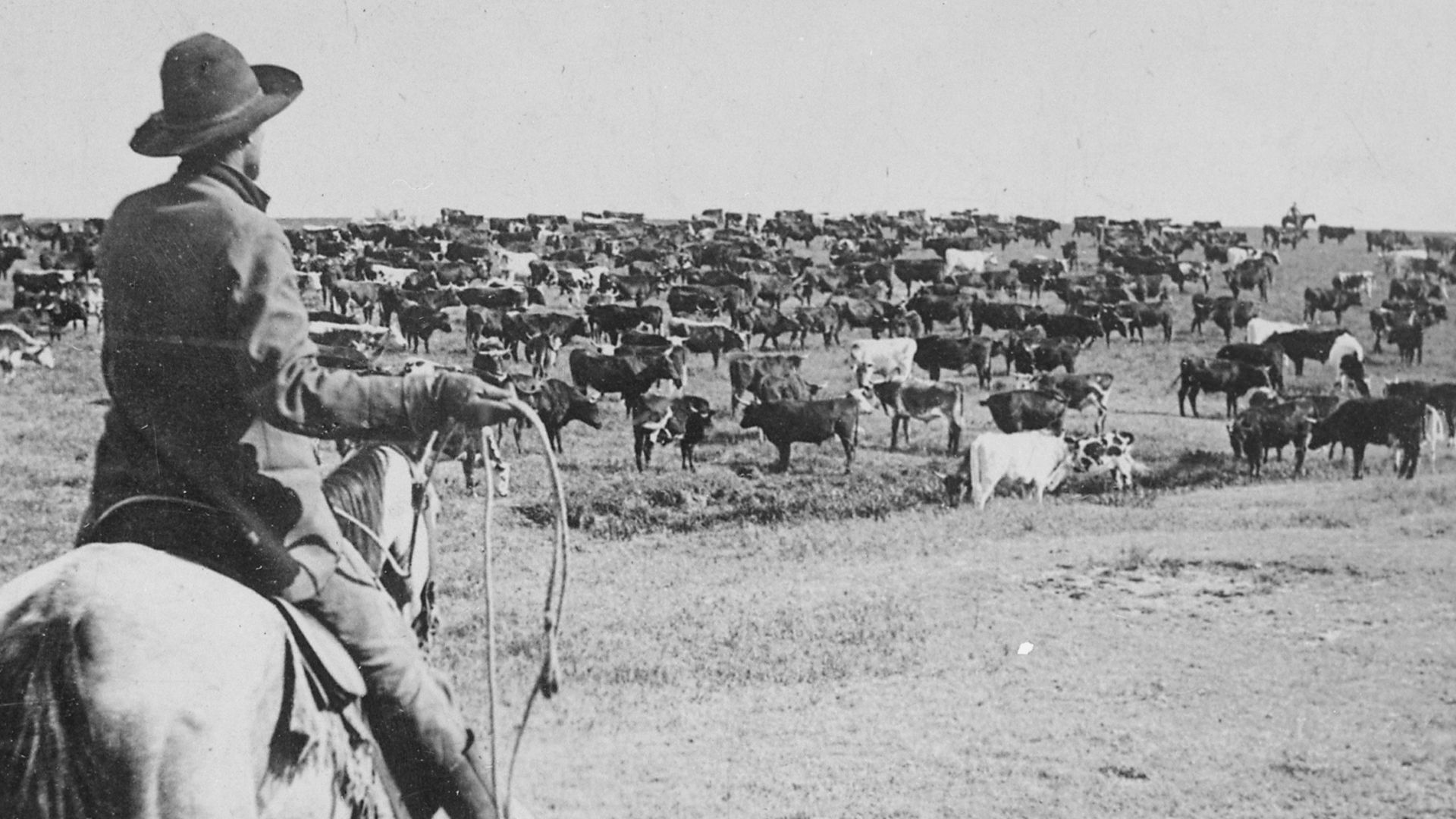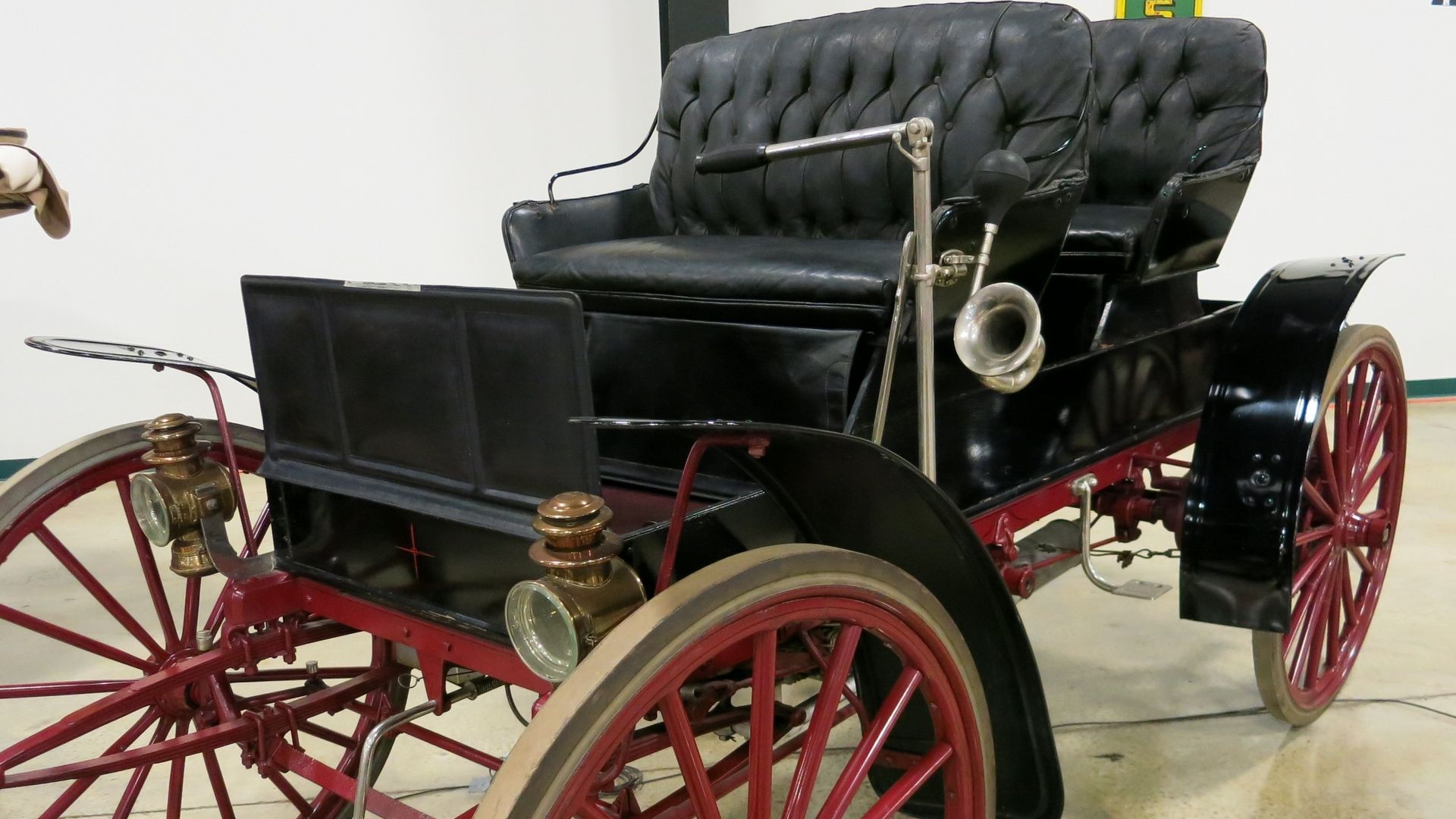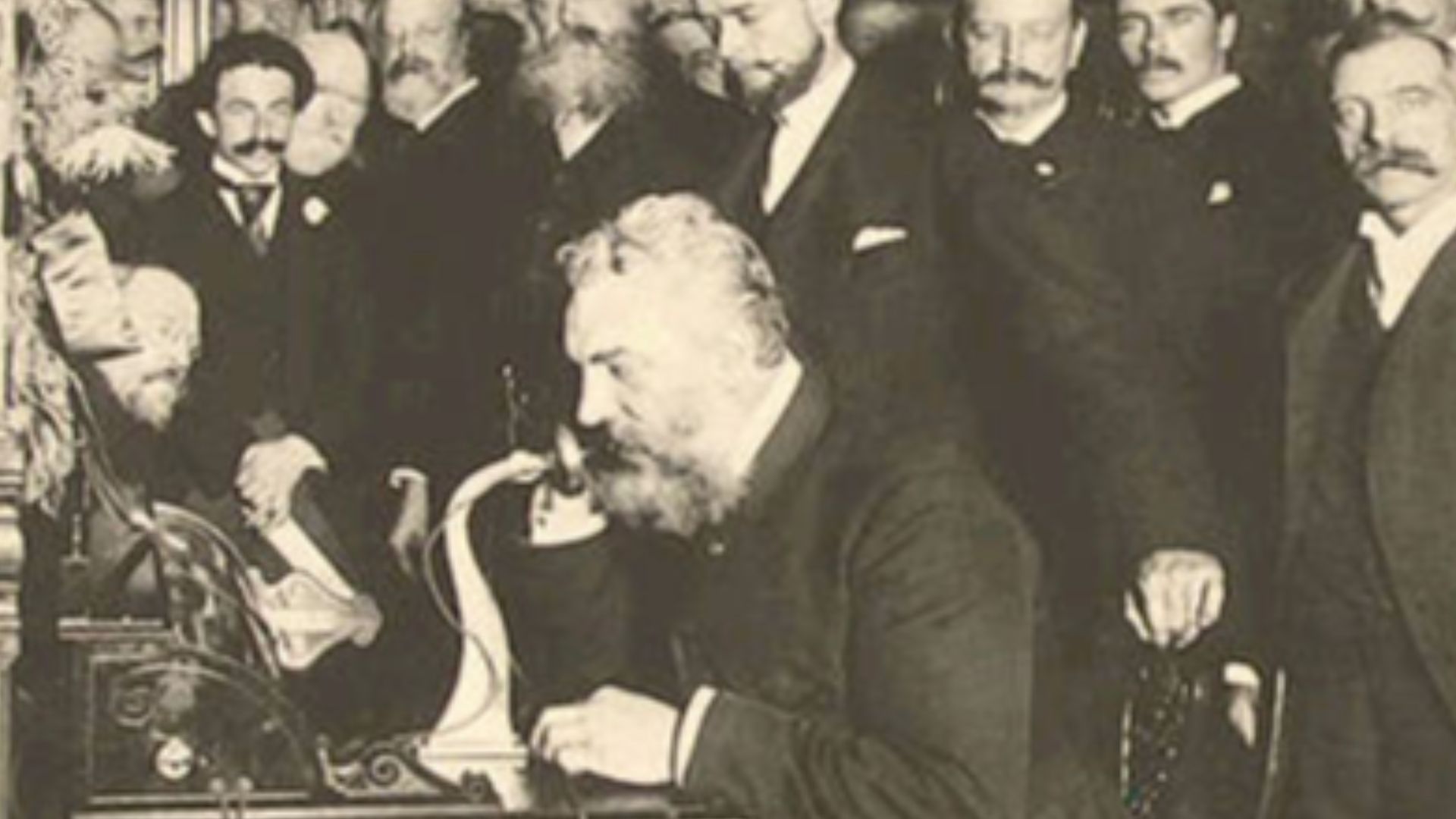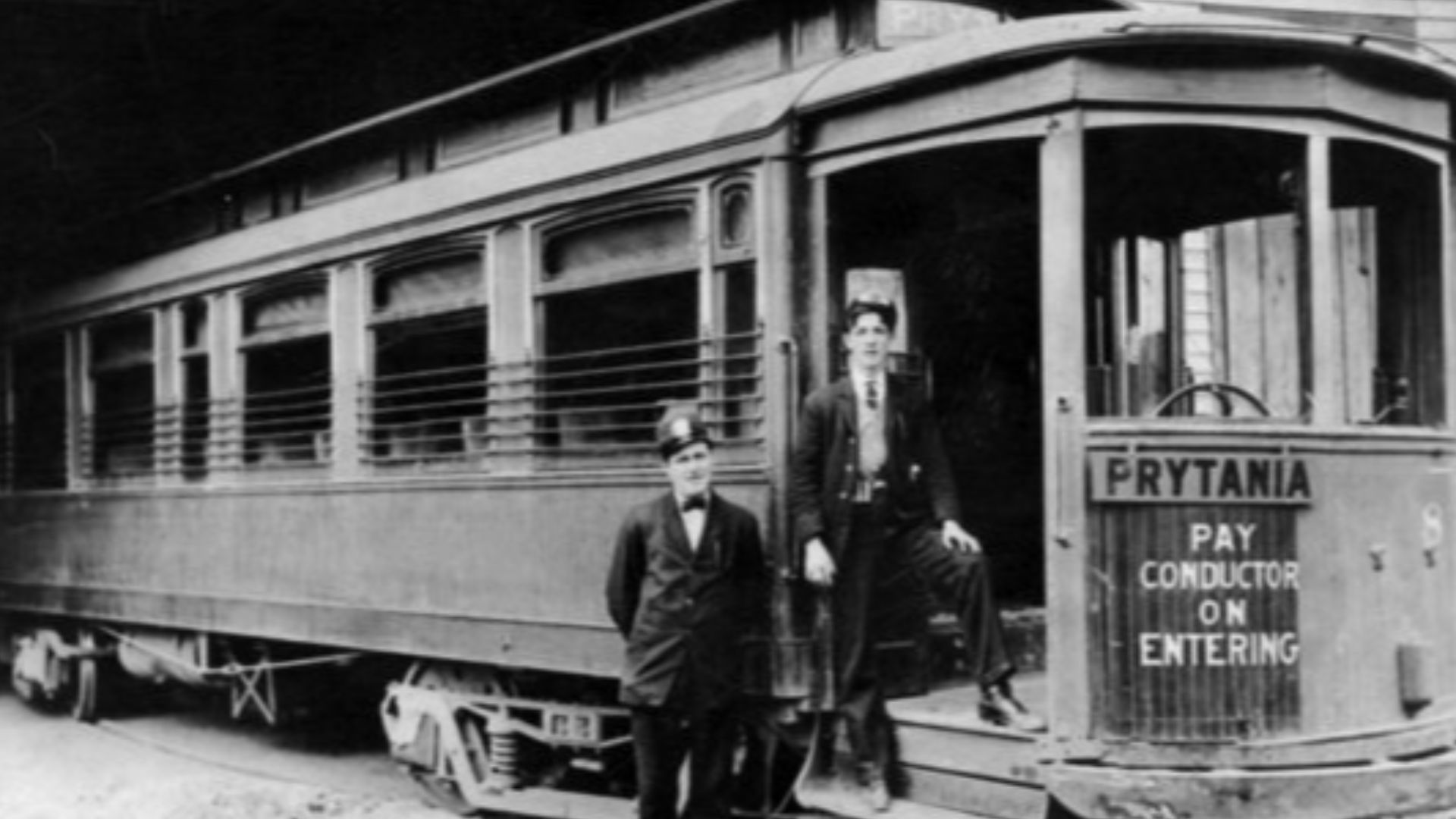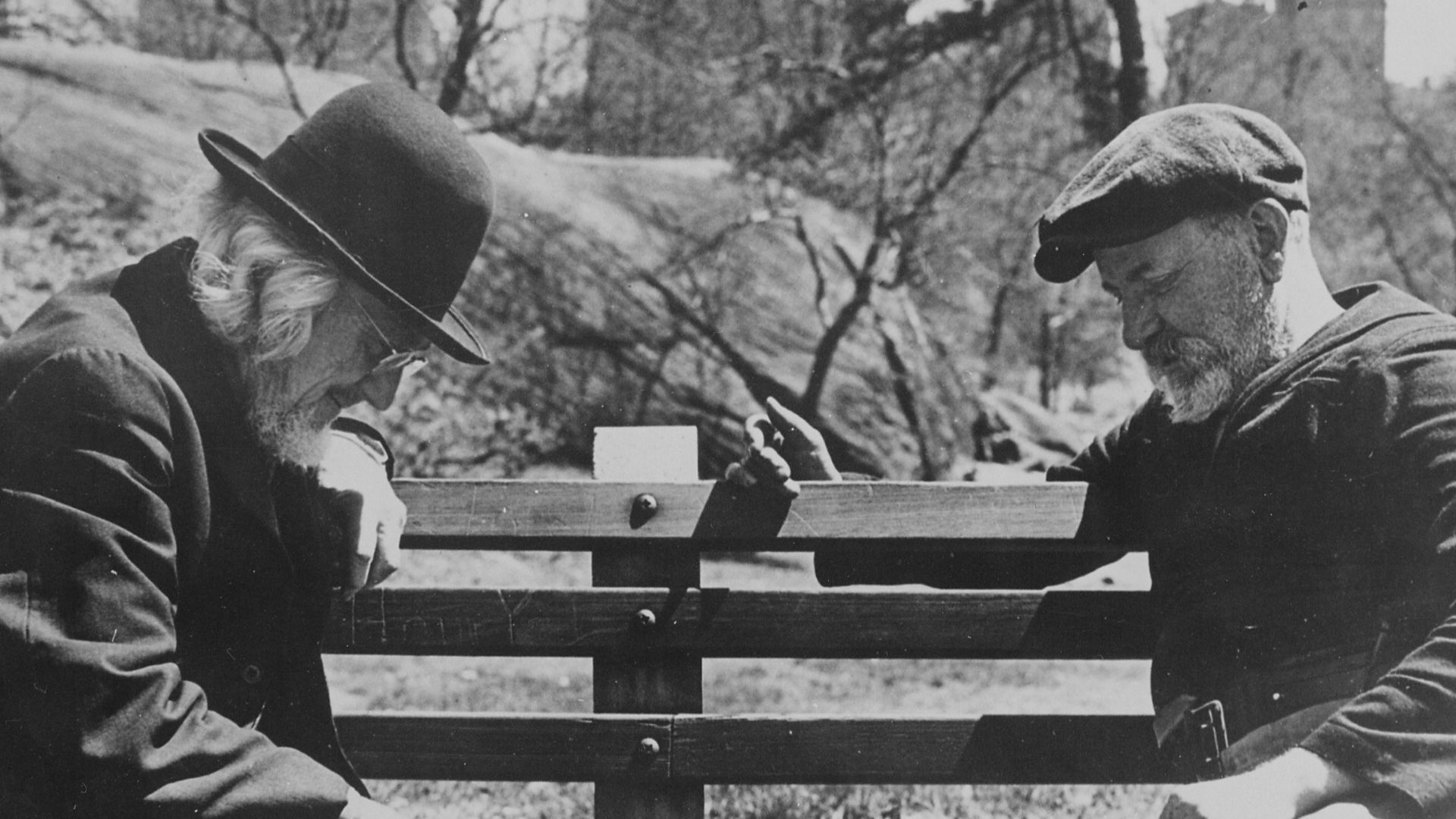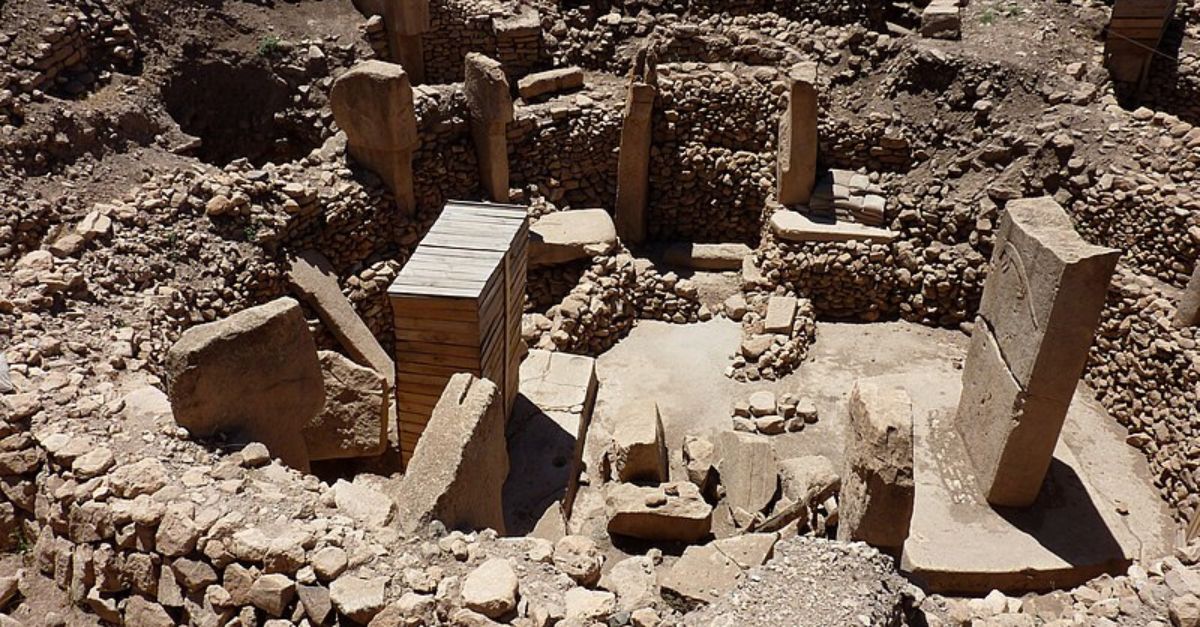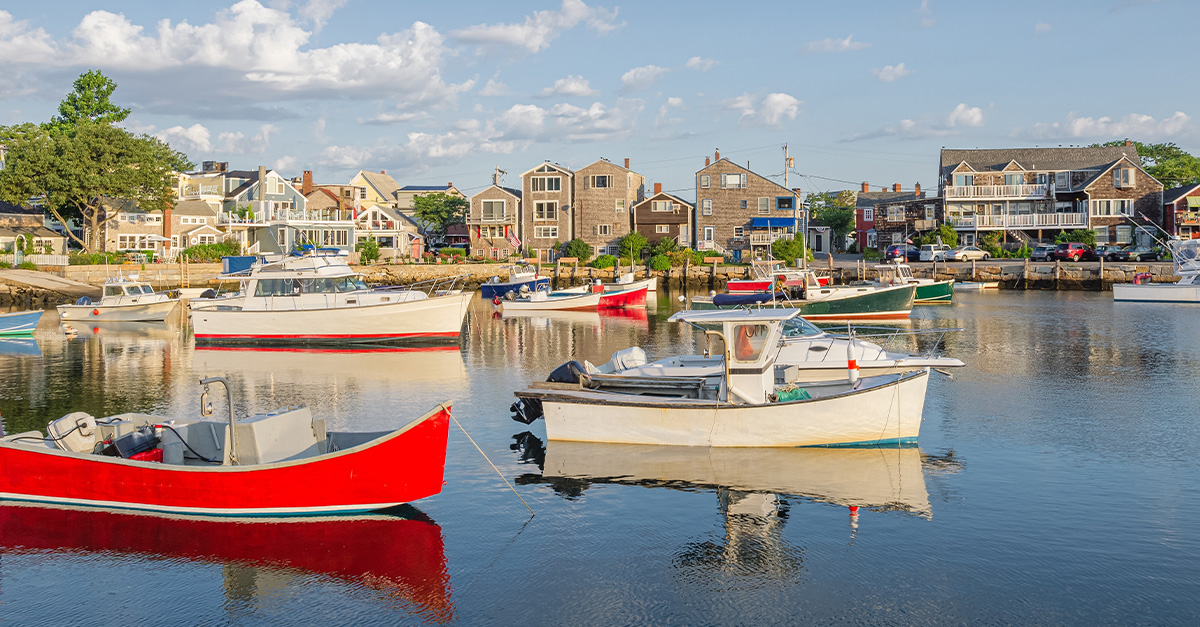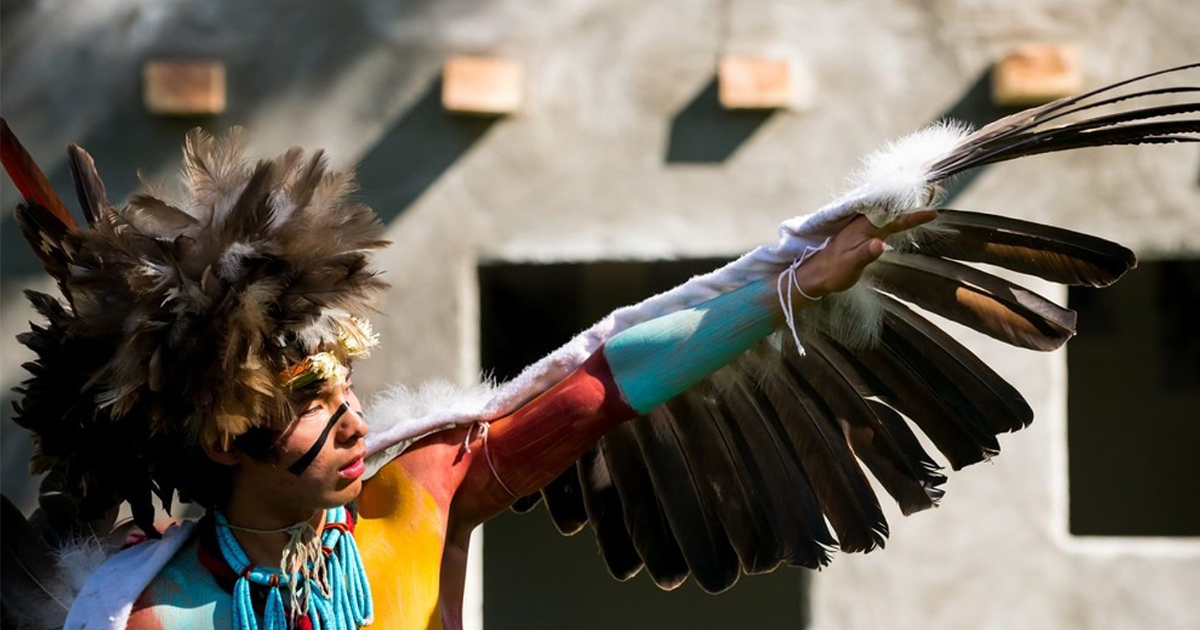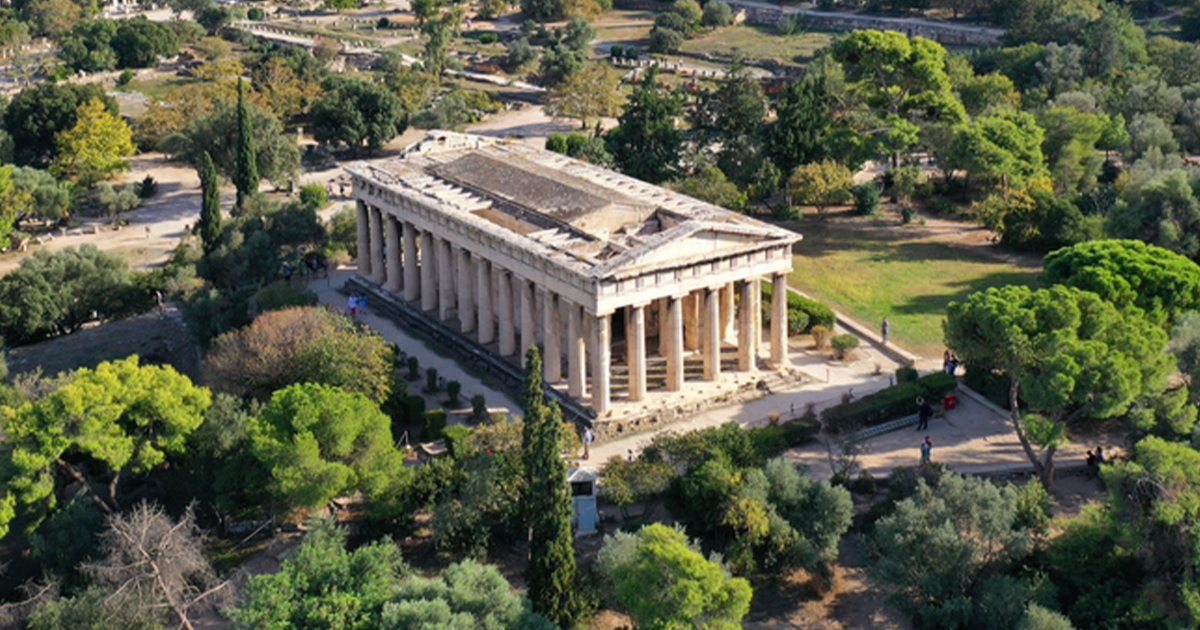The Beginnings
Before highways and high-rises, America was dirt roads and restless ambition. The 19th century was the testing ground for everything we now take for granted, and its stories feel like the start of everything.
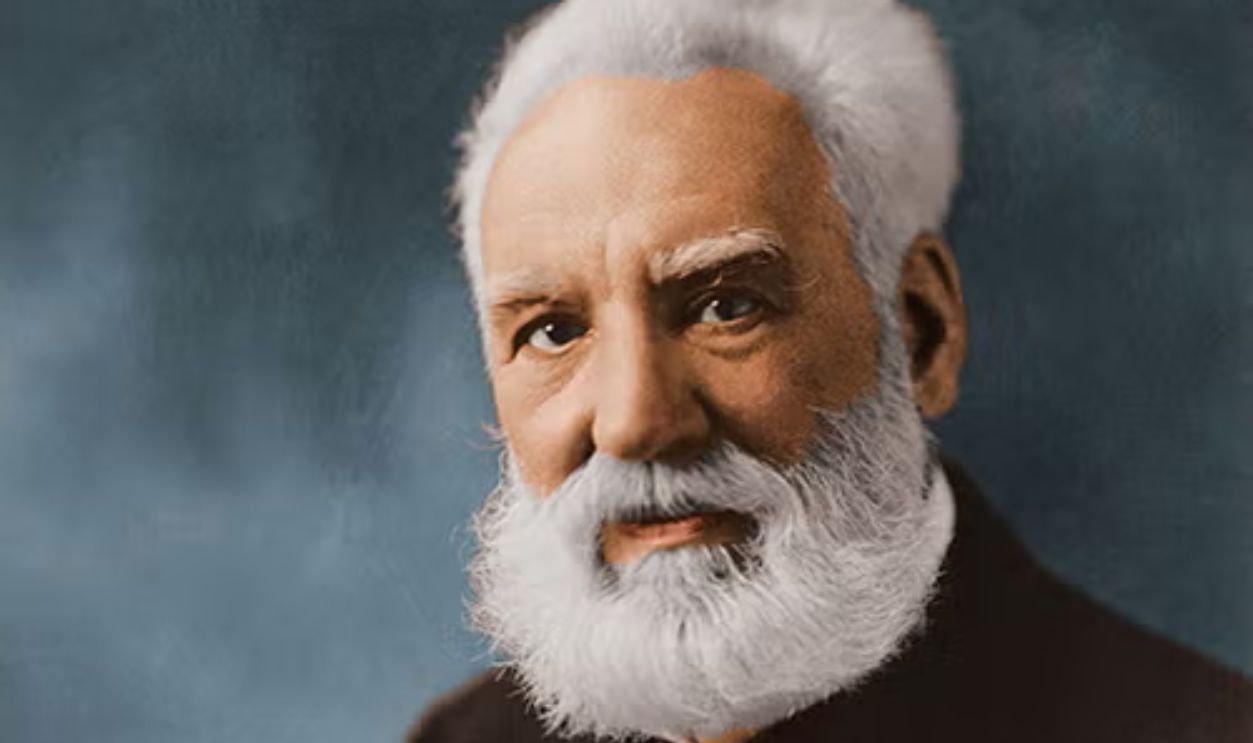
Life In Log Cabins Shaped The Early American Frontier
Across dense forests and open plains, families built snug log cabins with their own hands. These homes were cramped, but they represented freedom and grit. Life centered around fireplaces and sheer survival. For many, the cabin was their American beginning.
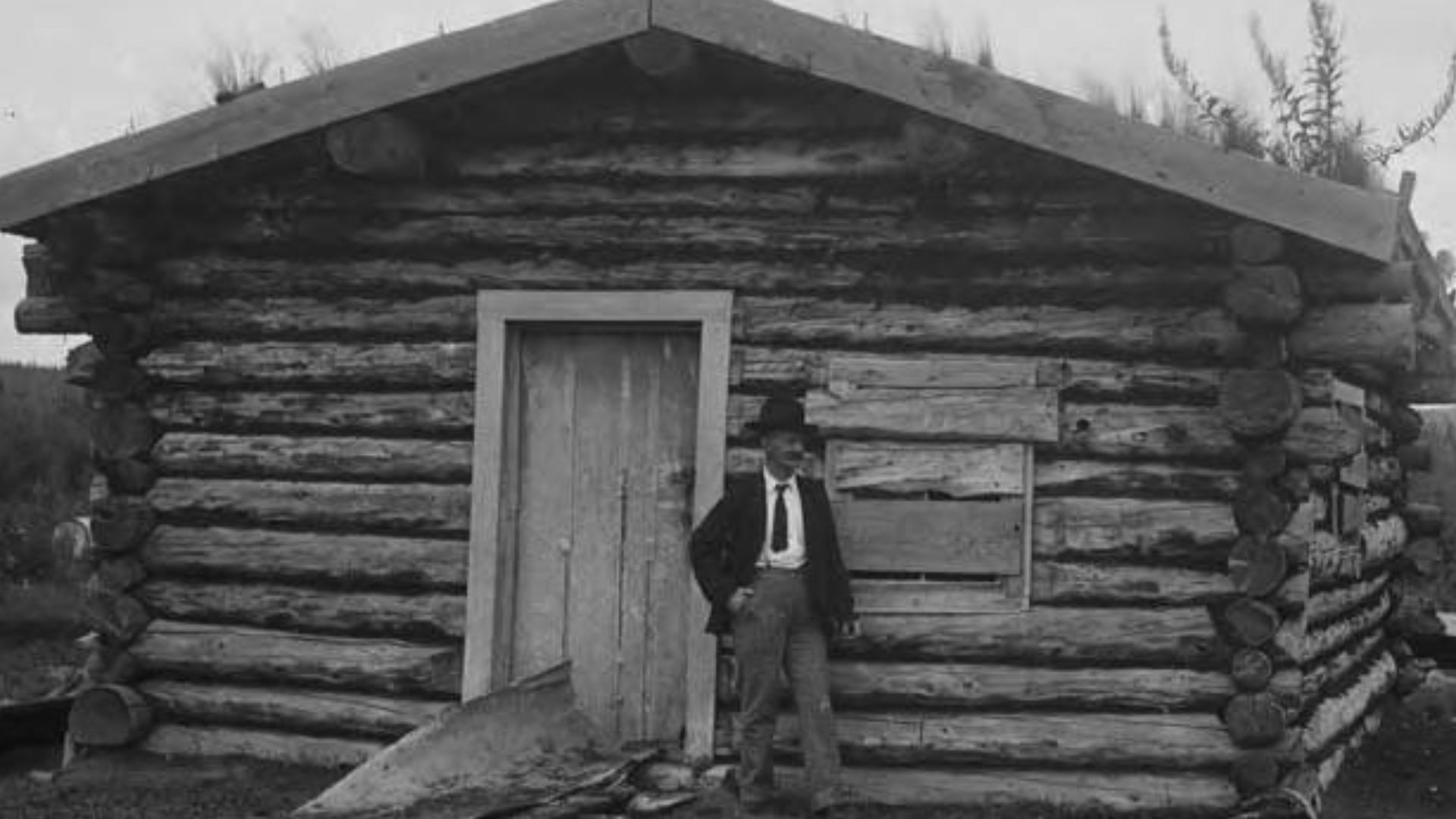 Douglas Tancred, Wikimedia Commons
Douglas Tancred, Wikimedia Commons
The Louisiana Purchase Redrew The Nation's Map
In 1803, the United States bought a vast stretch of land from France, doubling its size overnight. The Louisiana Territory was a wild unknown, filled with potential and mystery. This bold move ignited curiosity and ambition for generations of settlers and dreamers.
Immigrant Waves Reshaped City Neighborhoods
From crowded ships to crowded tenements, immigrants built new lives in strange cities. Irish, German, and other newcomers opened shops and formed communities. Their languages and foods filled the streets but over time they and their descendants began to assimilate.
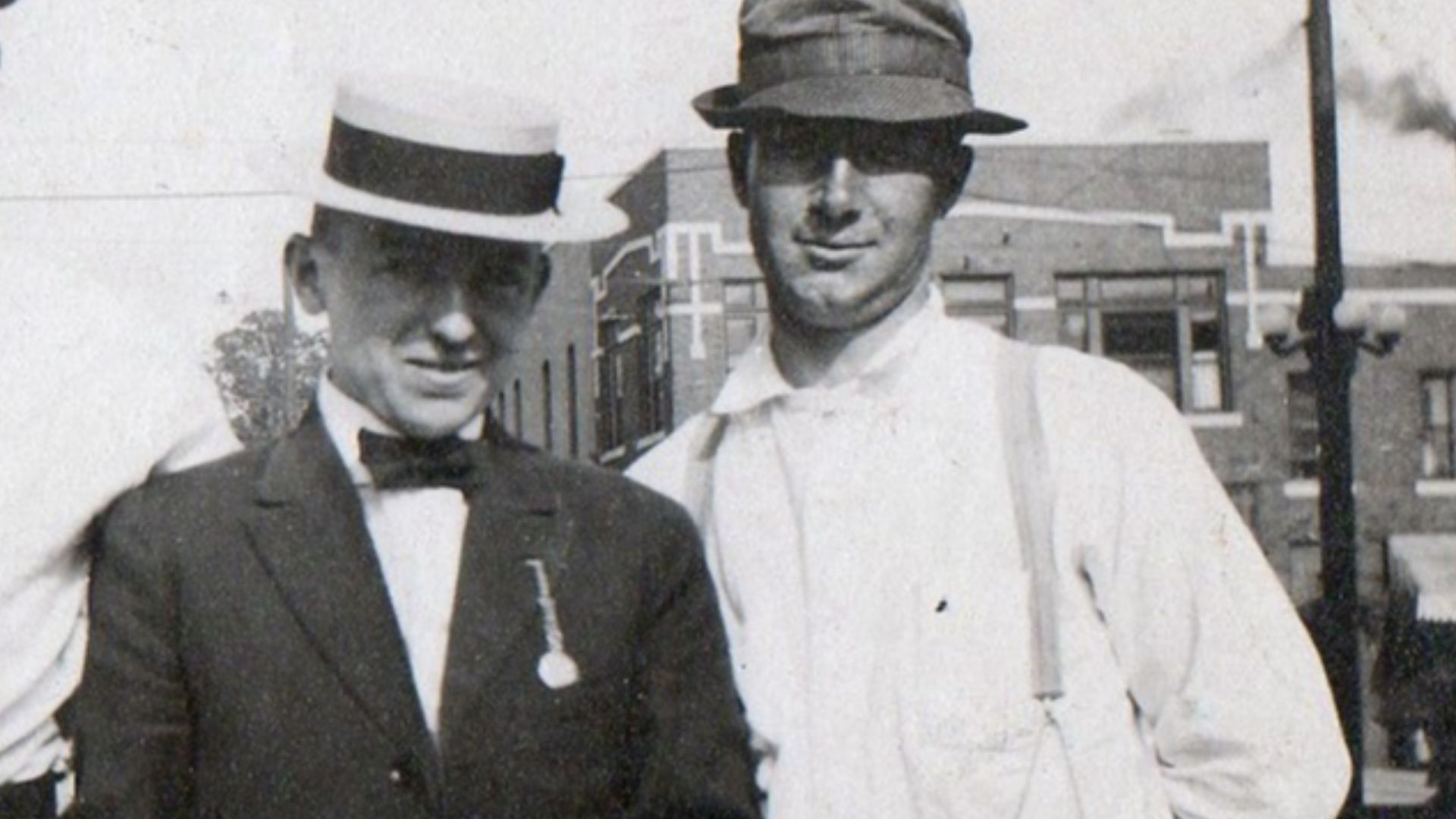 Deceased family member, Wikimedia Commons
Deceased family member, Wikimedia Commons
Lewis And Clark Blazed Through The West
Sent to explore new territory, Meriwether Lewis and William Clark led an epic journey across mountains and tribal lands. Their expedition mapped territories and forged uneasy alliances. Alongside Sacagawea, they opened the American imagination to the West and returned with stories of danger and raw possibility.
The War Of 1812 Tested America's Young Identity
Often overshadowed by bigger disputes, the War of 1812 saw the US clash with Britain. Cities burned, and national pride wavered. Yet from the wreckage came resilience. The Star-Spangled Banner was born, and the struggle ended with the Treaty of Ghent in 1814. Some issues were unresolved but a stronger national identity was born.
 Special Collections Toronto Public Library, Flickr
Special Collections Toronto Public Library, Flickr
Steamboats Turned The Mississippi Into A Trade Highway
With paddles churning and smoke trailing, steamboats brought speed to the Mississippi River. Farmers and adventurers relied on these vessels to move goods and ideas. Towns sprang up along riverbanks to change sleepy waterways into bustling corridors until railroads overshadowed them and diminished their dominance in trade.
The Erie Canal Connected Farms To Global Markets
When completed in 1825, the Erie Canal linked Lake Erie to the Hudson River to turn New York into a trade juggernaut. Merchants saw profits soar, and small towns boomed overnight. This artificial river shortened journeys and turned muddy paths into economic superhighways of the century.
One-Room Schoolhouses Educated Rural America
One-room schoolhouses welcomed children of all ages. A single teacher juggled subjects and discipline. Chalkboards creaked and slates scratched as kids learned the basics. Despite limited resources, these schools sparked curiosity and literacy across villages and the expanding American frontier.
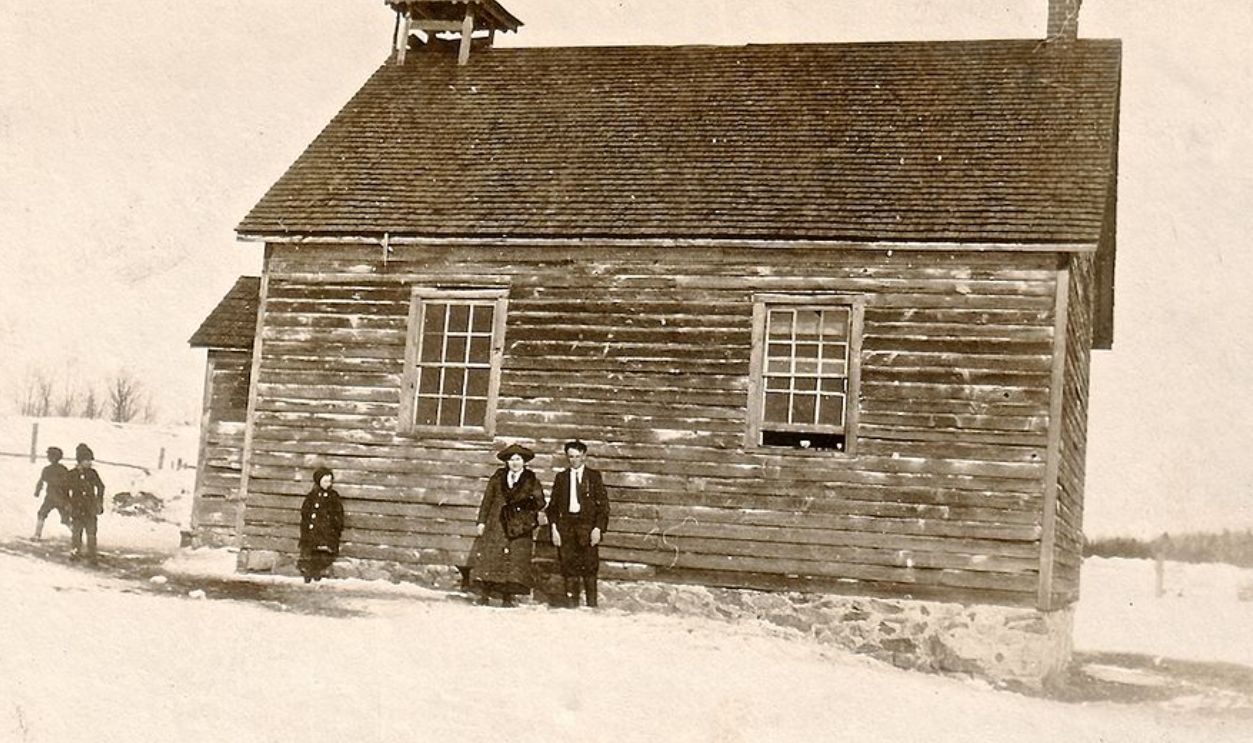 Cloyne and District Historical Society, Wikimedia Commons
Cloyne and District Historical Society, Wikimedia Commons
Jacksonian Democracy Expanded Voting, But Not For All
Andrew Jackson's rise marked a shift toward populist politics. Voting rights grew for white men. Women, Native Americans, and Black citizens were left behind. Jackson's era brought big promises of opportunity but also entrenched exclusion. His brand of democracy left a mixed legacy of empowerment and harm.
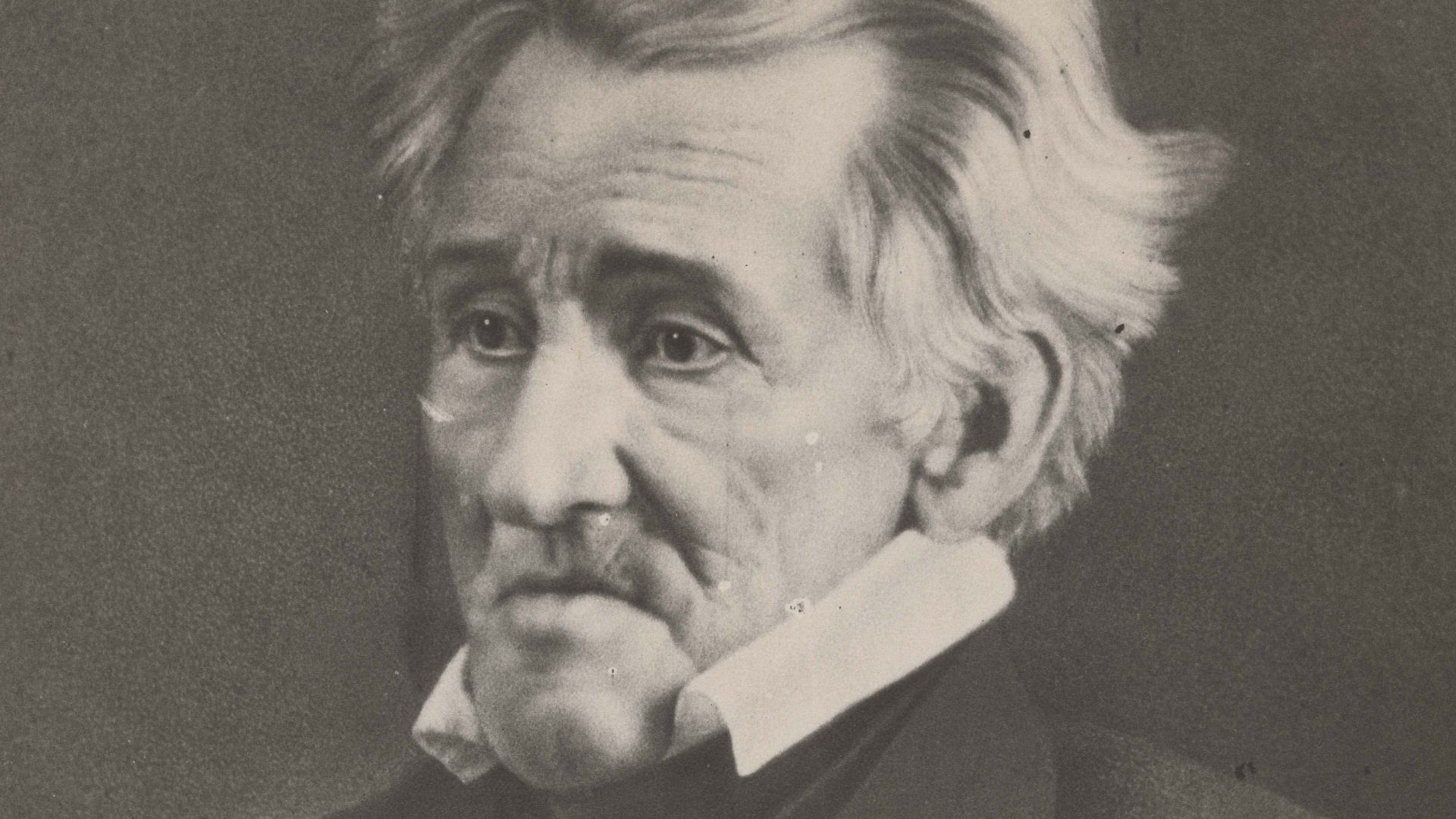 Mathew Brady, Wikimedia Commons
Mathew Brady, Wikimedia Commons
The Trail Of Tears Carved A Tragic Path Across The South
Thousands of Cherokee and other tribes were marched from their homes under threat and violence. Disease and starvation followed them. The Trail of Tears remains one of America's most devastating acts of displacement, permanently reshaping Native life and Southern land.
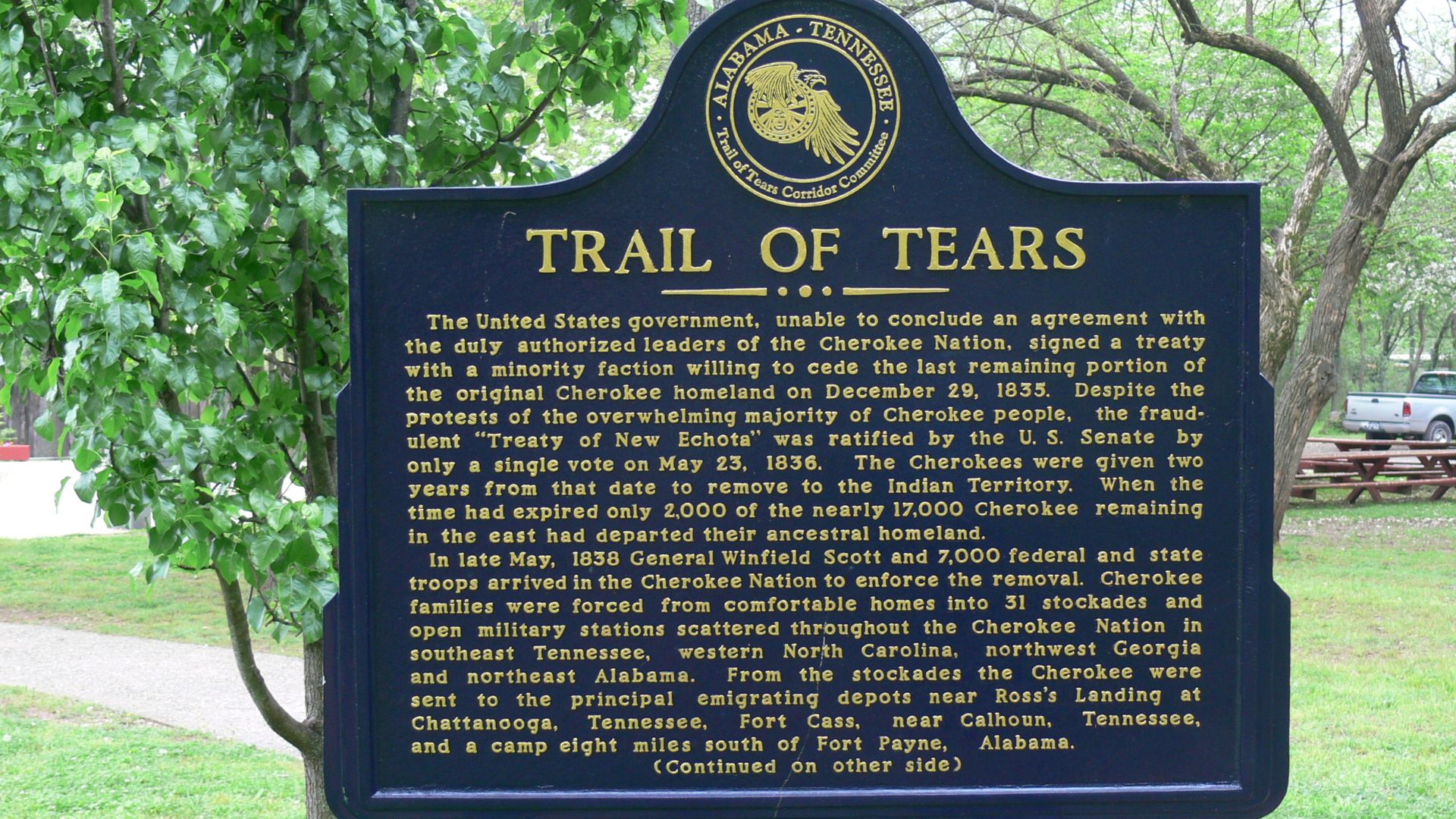 Wolfgang Sauber, Wikimedia Commons
Wolfgang Sauber, Wikimedia Commons
Early Women's Rights Advocates Challenged Gender Norms
Before suffrage made headlines, women met in parlors and churches to question their roles. Elizabeth Cady Stanton and Lucretia Mott stirred debate and laid the groundwork for future wins. Their push for equality began with questions that echoed through halls and households.
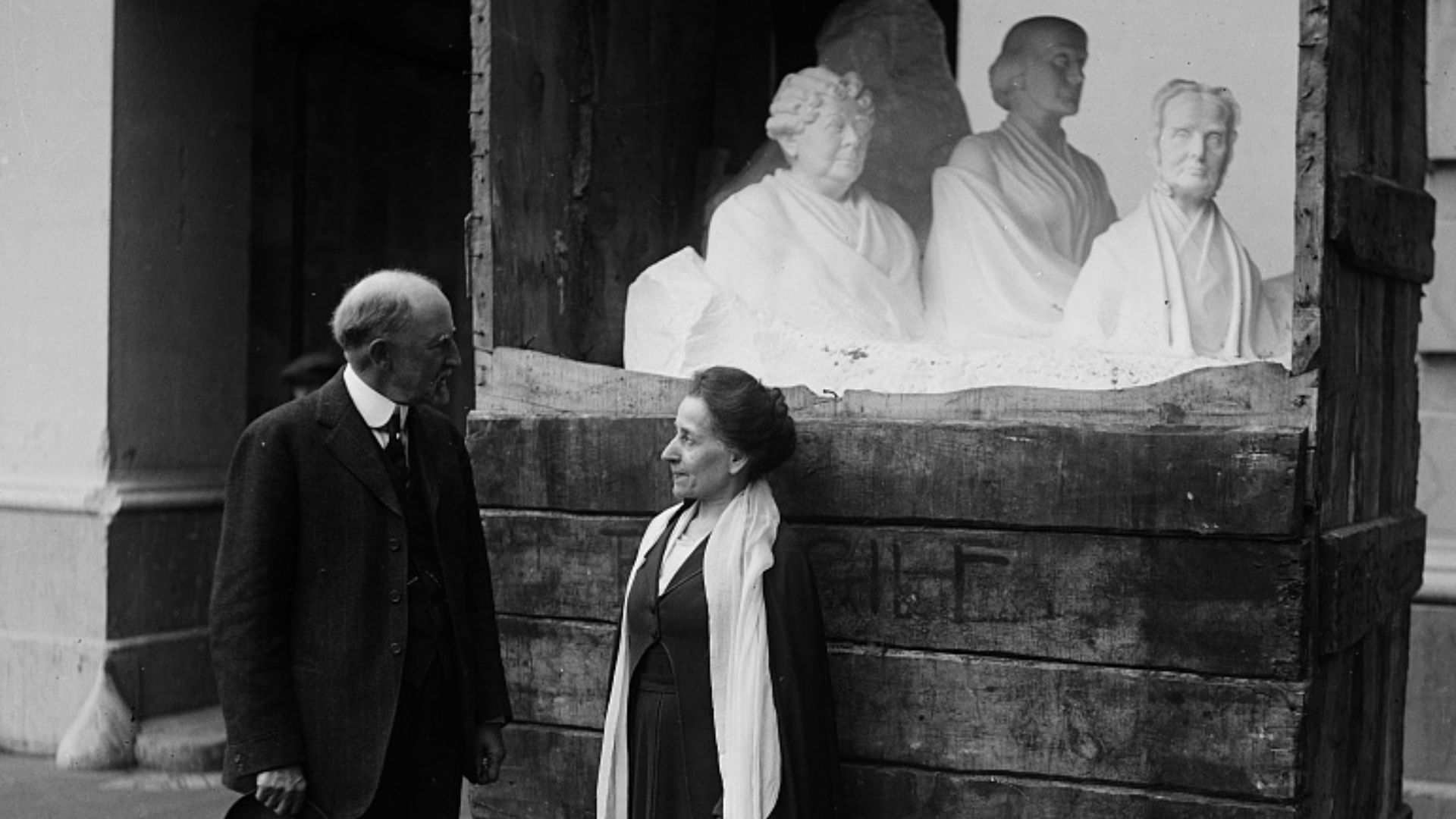 Harris & Ewing, Wikimedia Commons
Harris & Ewing, Wikimedia Commons
Transcendentalists Urged Self-Reliance And Simplicity
Henry David Thoreau and Ralph Waldo Emerson rejected convention. These thinkers turned to nature and inner truth to preach independence over conformity. Their ideas took root in quiet corners of the country and inspired Americans to look inward and challenge the loud machinery of progress.
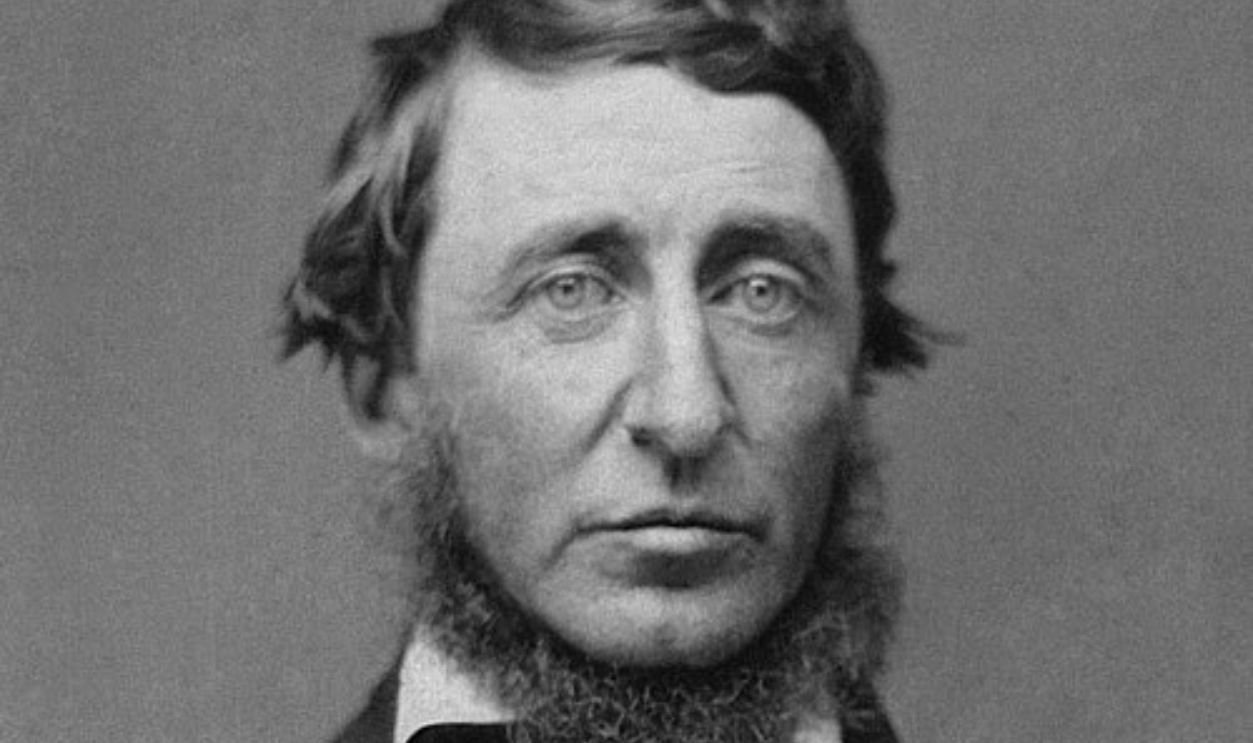 B. D. Maxham, Wikimedia Commons
B. D. Maxham, Wikimedia Commons
The Second Great Awakening Fueled Religious Zeal And Reform
Fiery sermons and emotional conversions swept the countryside. This religious wave bled into social reform. Movements to end slavery and improve prisons gained steam. Faith became a tool for action, not just salvation, to reshape American life from the inside out.
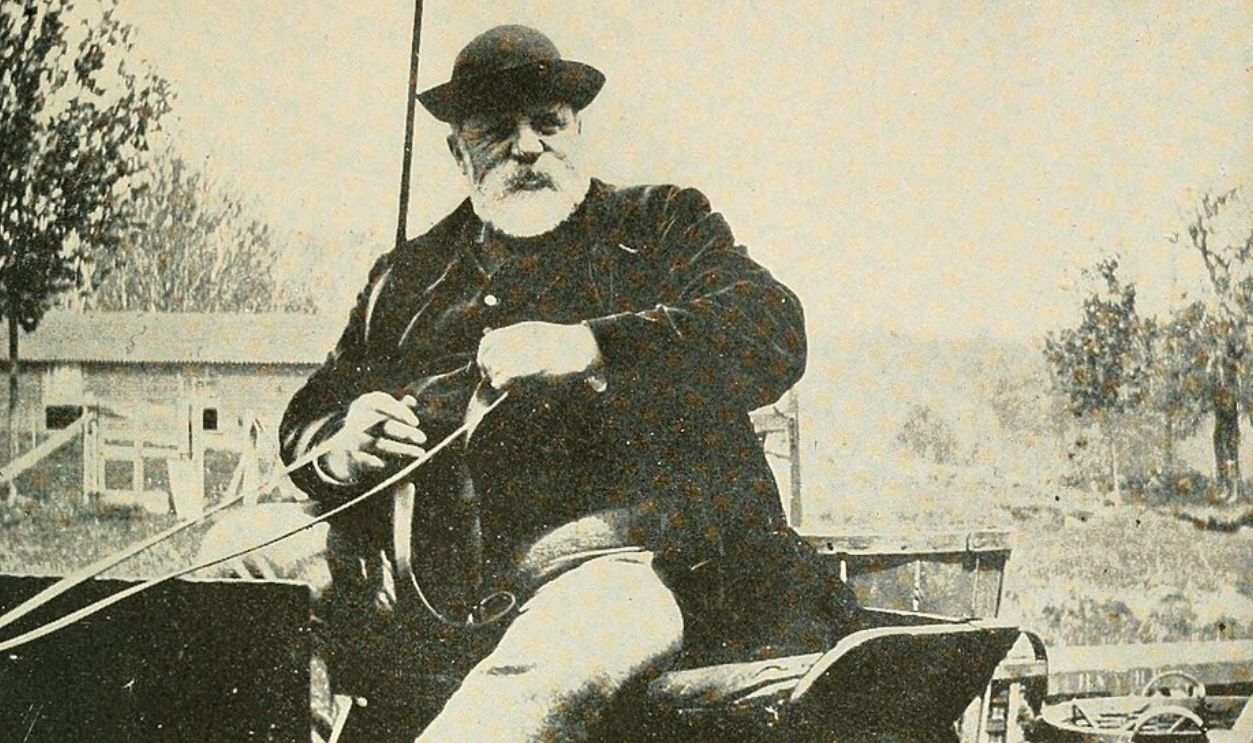 Internet Archive Book Images, Wikimedia Commons
Internet Archive Book Images, Wikimedia Commons
Morse Code Messages Traveled Faster Than Horses
When Samuel Morse sent his first telegraph in 1844, the world got smaller. Dots and dashes zipped over wires to replace riders and guesswork. War news and family updates all moved at lightning speed. This simple invention redefined what it meant to be connected.
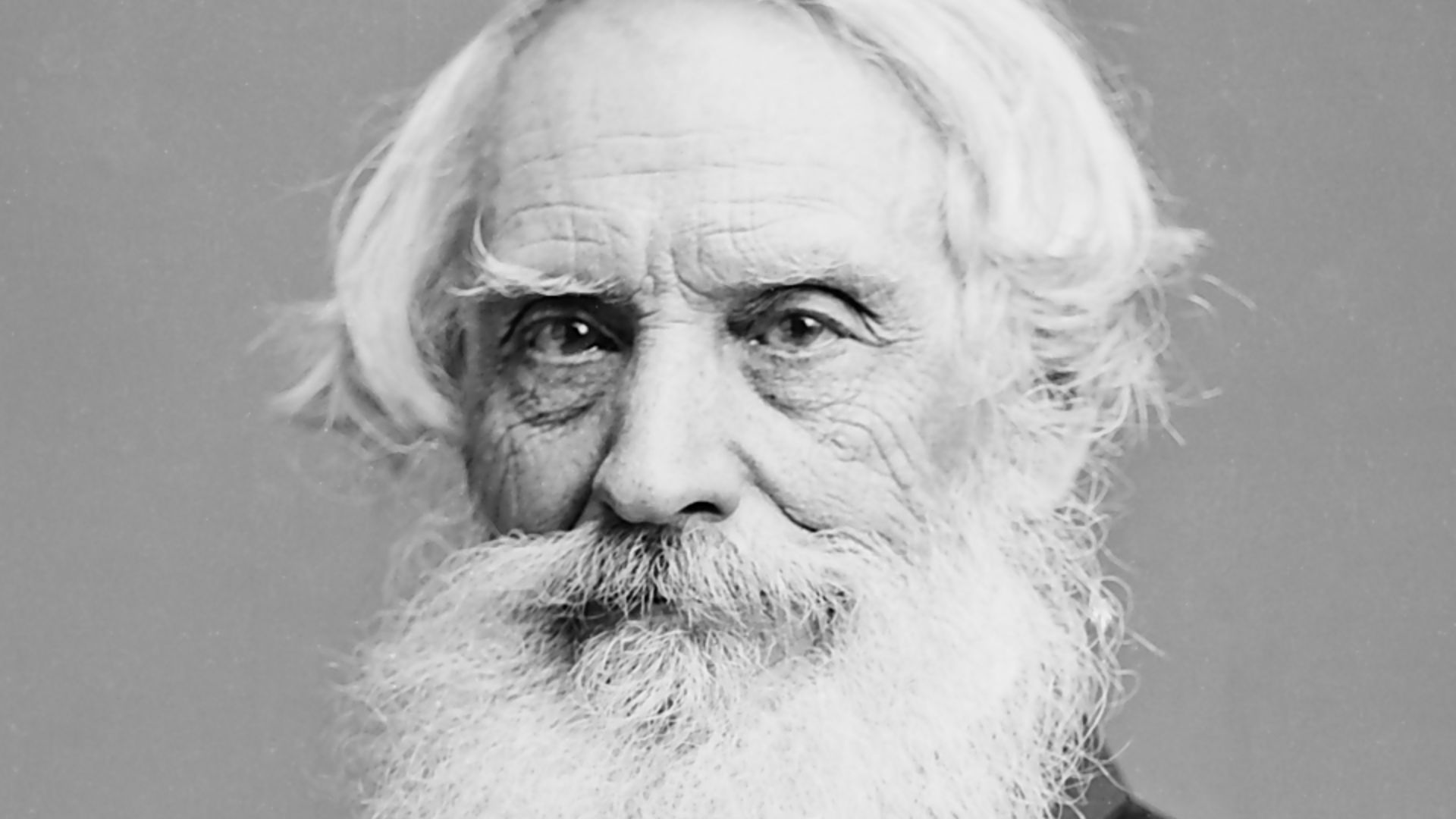 Mathew Benjamin Brady, Wikimedia Commons
Mathew Benjamin Brady, Wikimedia Commons
The Republic Of Texas Became A Symbol Of American Expansion
In 1836, Texas broke from Mexico and declared itself independent. For a while, it was its own country, complete with flags and ambition. Americans admired the defiance and eyed its land. When Texas joined the US in 1845, the border shifted, and tensions with Mexico edged toward all-out war.
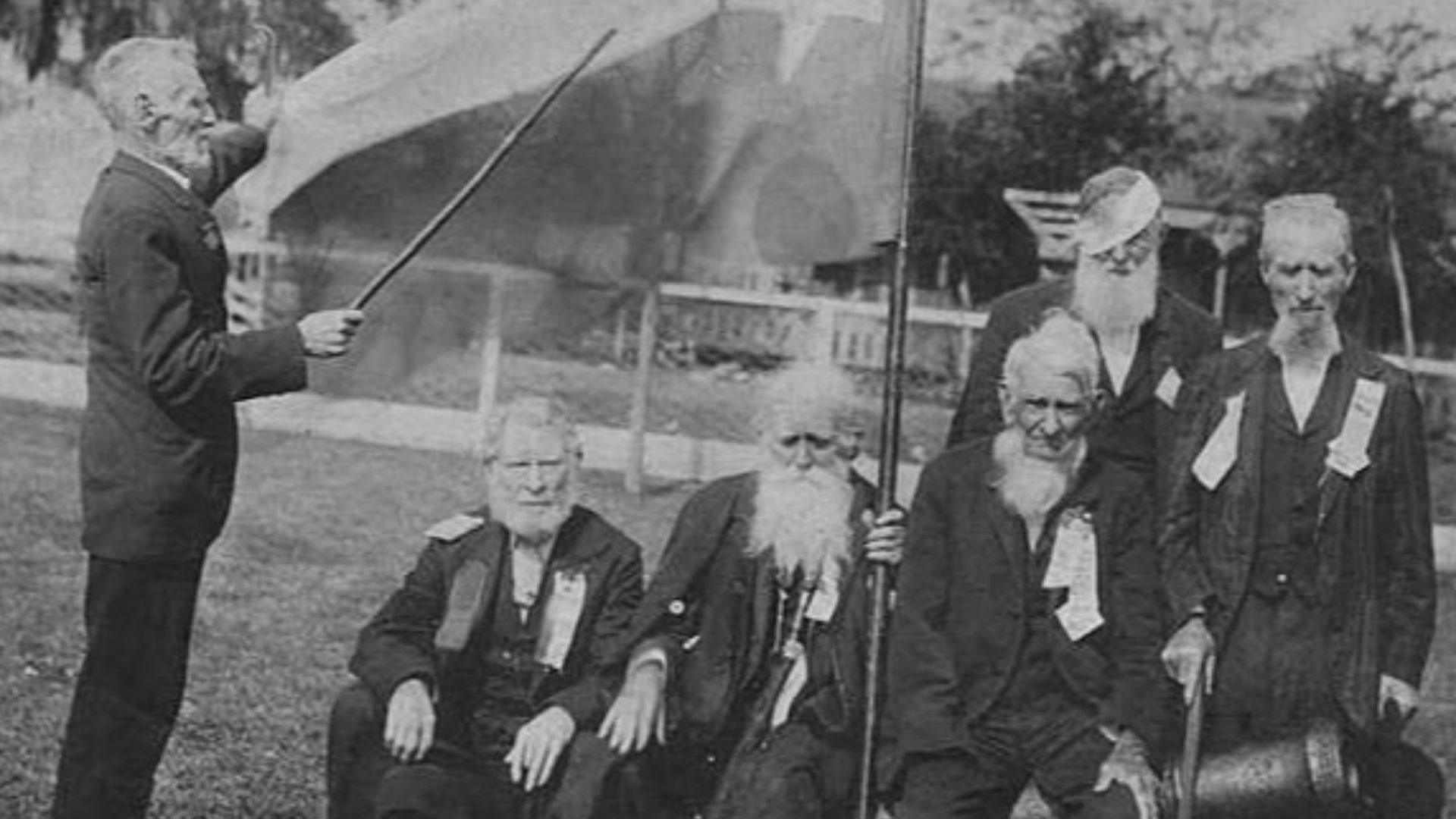 C. A. Major, Wikimedia Commons
C. A. Major, Wikimedia Commons
Row Houses And Slums Housed The Urban Working Poor
In cities like New York and Philadelphia, housing boomed—and so did poverty. Brick row houses packed families shoulder to shoulder. The air was thin, and many fell sick. But for many laborers, it was better than nothing. These tight quarters told a raw story of struggle and survival.
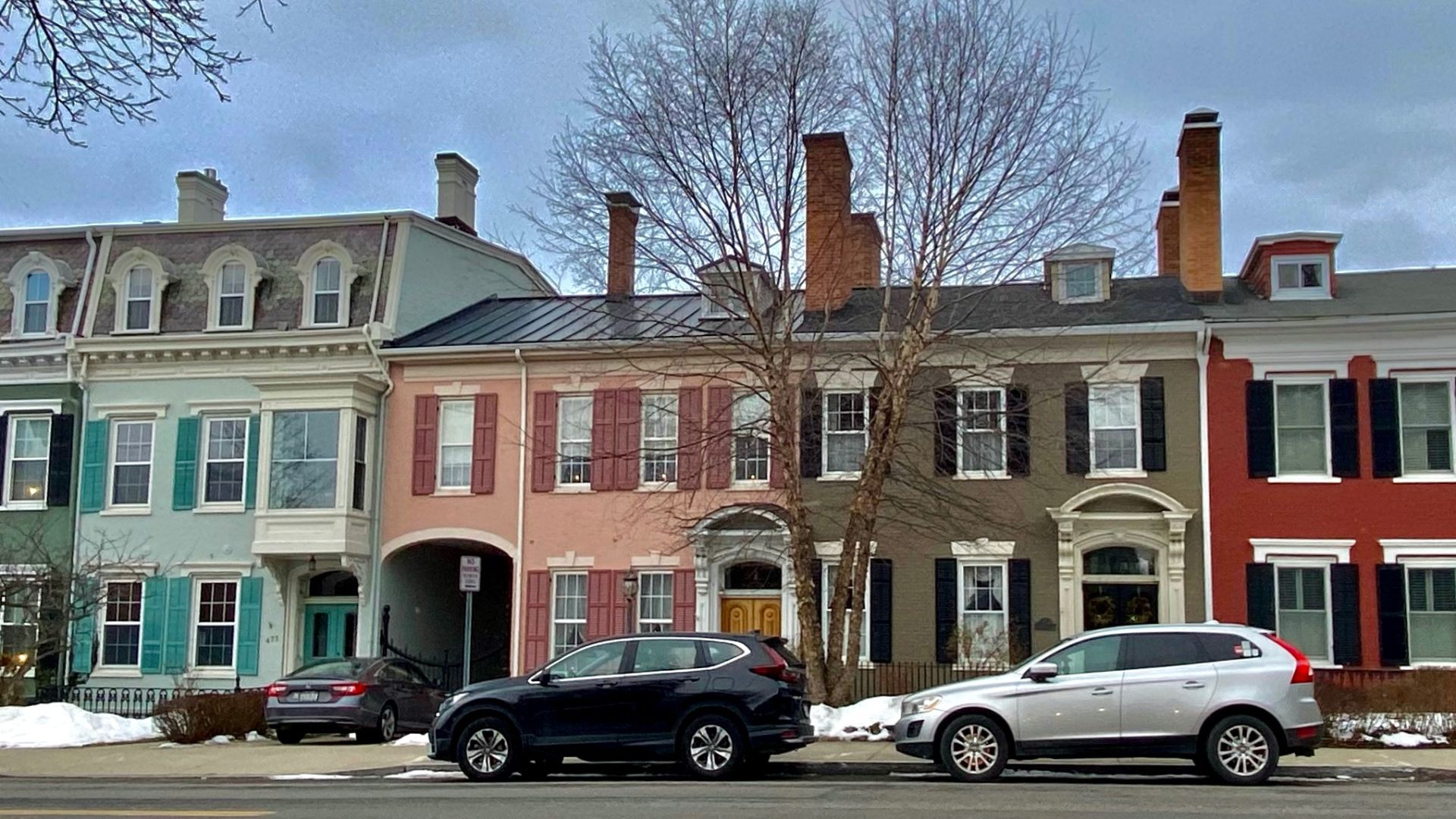 Andre Carrotflower, Wikimedia Commons
Andre Carrotflower, Wikimedia Commons
California Gold Rush Miners Chased Fortune And Chaos
In 1849, gold fever drew thousands to California. Dreams of wealth fueled long journeys and risky bets. Some struck it rich, most did not. But the gold rush reshaped the West by swelling towns overnight and laying tracks for America's coast-to-coast ambition.
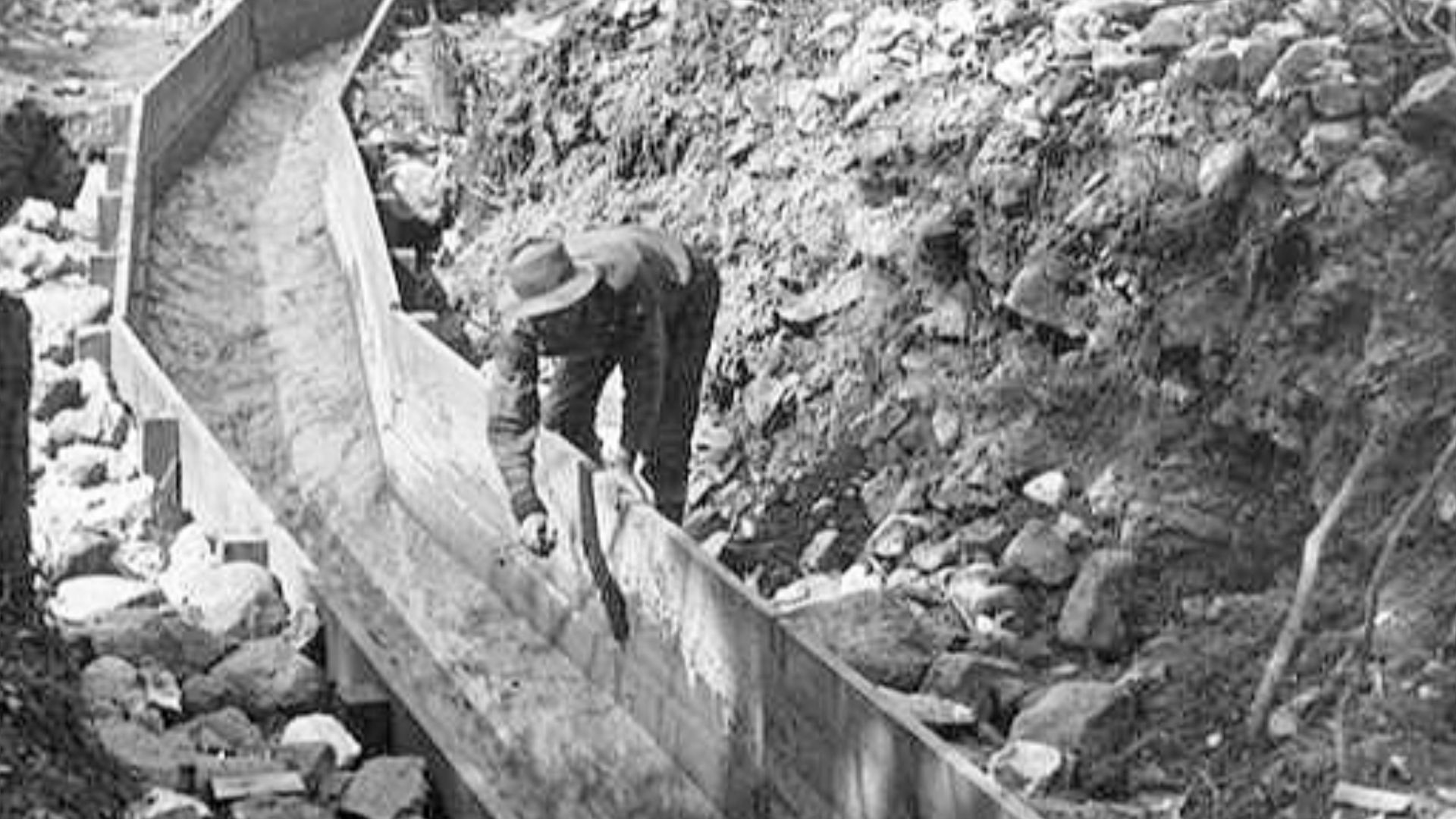 Lordkinbote, Wikimedia Commons
Lordkinbote, Wikimedia Commons
Chinese Laborers Built The West And Faced Exclusion
Chinese workers helped carve railroads through mountains and deserts. Their labor was tireless, and their conditions were harsh. However, when the tracks were done, they were pushed aside, targeted by violence, and banned by law. Yet their contributions remain carved into the rails, even if history too often forgets them.
Soldiers Endured Blood And Marching
Whether Union blue or Confederate gray, soldiers faced brutal conditions. They marched for miles and slept in mud, usually without enough food. Battles brought chaos and fear, and letters home carried hope and sorrow. The conflict was massive, but its toll lived in each weary step and silent graveyard.
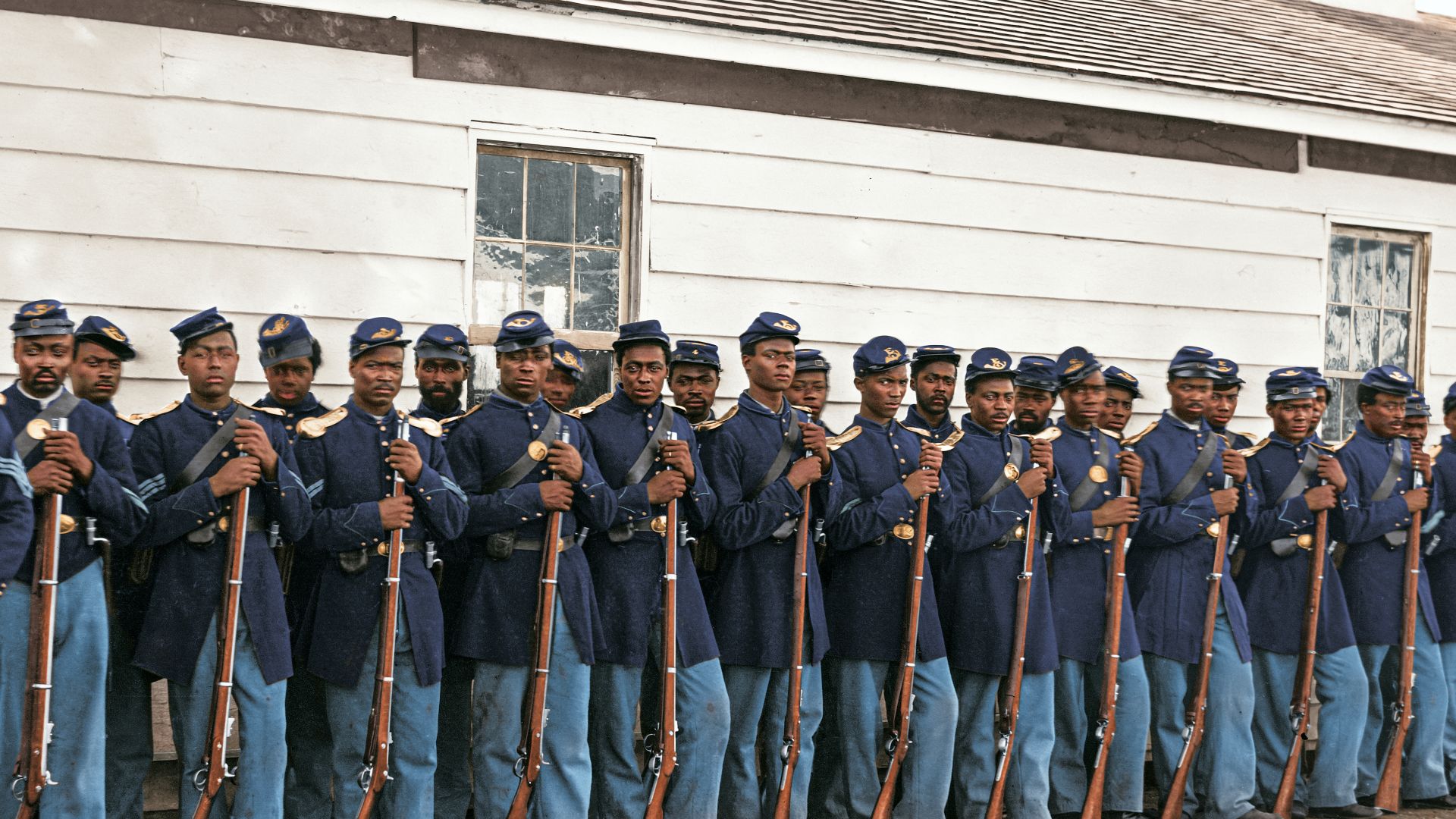 Julius Jaaskelainen, Wikimedia Commons
Julius Jaaskelainen, Wikimedia Commons
The Underground Railroad Guided Escapes To Freedom
It wasn't a railroad, and it wasn't underground, but it moved people with stealth and courage. Conductors, many of them formerly enslaved, risked prison to lead others north. Coded songs and nighttime journeys marked this secret network that offered a fighting chance to breathe free.
Violence In "Bleeding Kansas" Foretold Years of Violence
When Congress opened Kansas to settlers, both pro- and anti-slavery forces rushed in, but bloodshed followed. Towns were burned, and neighbors became enemies. "Bleeding Kansas" was a brutal warning that the question of slavery would no longer be settled by compromise.
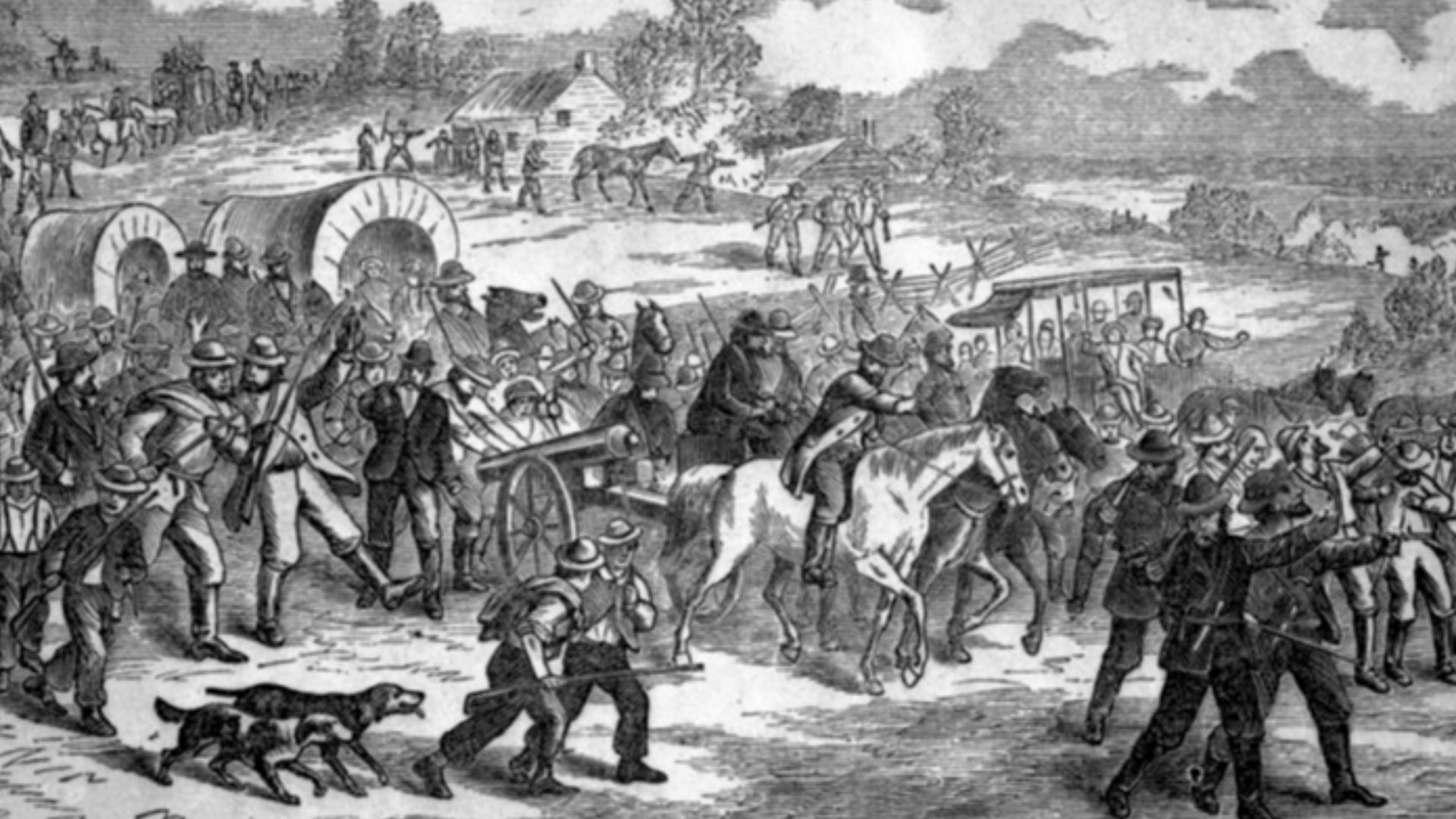 James, Emmons & Co., Wikimedia Commons
James, Emmons & Co., Wikimedia Commons
Women Like Clara Barton Took To The Battlefield As Nurses
The Civil War pulled women far from home and into hospitals near the front lines. Clara Barton, who later founded the American Red Cross, defied bullets to aid wounded soldiers. These nurses were healers and symbols of strength in an era that rarely welcomed them.
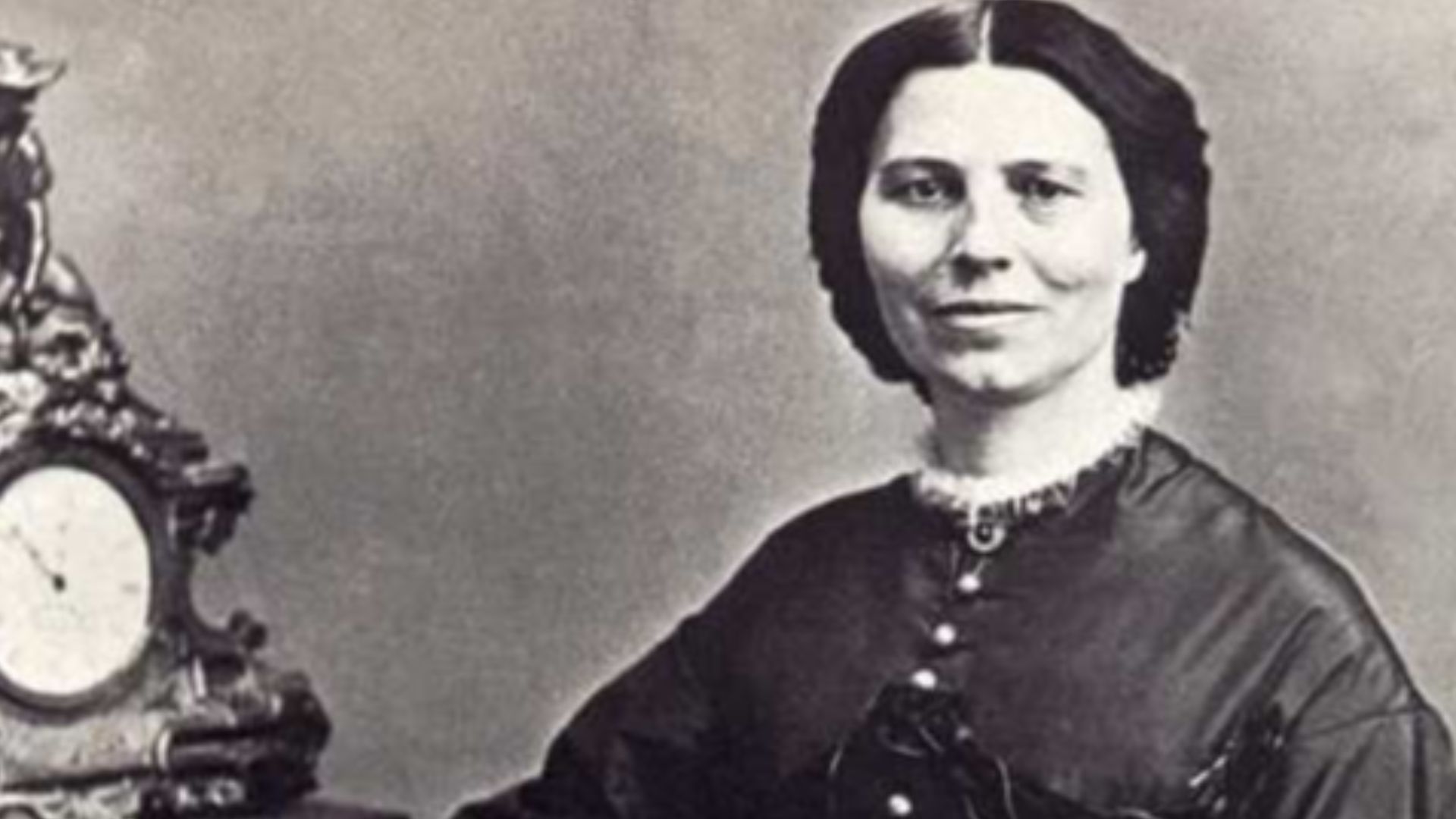 Mathew Benjamin Brady, Wikimedia Commons
Mathew Benjamin Brady, Wikimedia Commons
Pony Express Riders Carried News Across Desolate Trails
Before telegraphs crossed the land, the Pony Express galloped across it. Young riders dashed from station to station, braving storms and exhaustion. With saddlebags full of letters, they made the West feel less remote. Though short-lived, their daring rides made mail a race against time and terrain.
Factories And Machines Changed The Northern Workforce
Smoke rose over cities as machines replaced handmade goods. Northern factories buzzed with noise and ambition as people worked long hours for meager pay. Jobs were tough, but they promised stability, or at least survival. Industry redefined labor and family life.
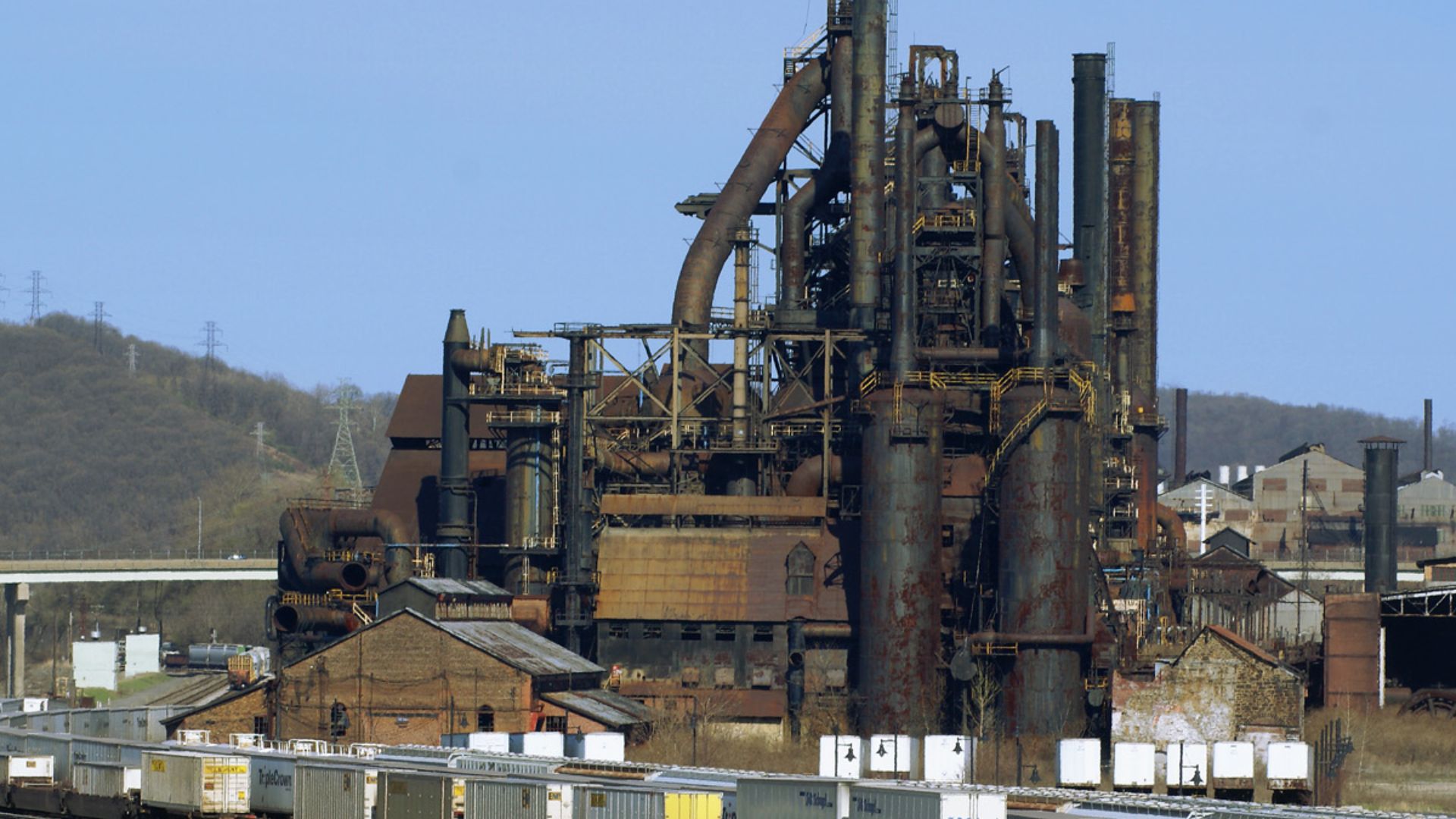 Jschnalzer at English Wikipedia, Wikimedia Commons
Jschnalzer at English Wikipedia, Wikimedia Commons
Young Women Lived And Labored In Textile Mill Towns
In towns like Lowell, Massachusetts, teenage girls flocked to textile mills for work and wages. They lived in boarding houses and filled long days with spinning and stitching. Some sent money home, but others joined labor protests. These "mill girls" were the quiet pioneers of independence.
Daguerreotypes Captured America's First Photographs
Americans sat still for daguerreotypes decades before selfies. These silver-coated images froze moments of nature, portraits, street scenes, and even conflict. They were expensive and solemn, often the only picture someone would ever own. Those early photos gave faces to an era before memory blurred its edges.
The Emancipation Proclamation Reframed The War's Purpose
Issued in 1863, Lincoln's proclamation didn't end slavery instantly, but it redefined the Civil War. No longer just about union, the fight became about freedom. It allowed Black men to join the army and signaled to the world that the United States stood, unevenly, for liberty in the face of division.
 Alexander Gardner, Wikimedia Commons
Alexander Gardner, Wikimedia Commons
Lincoln's Assassination Shattered Hopes For Unity
Just days after victory, President Lincoln was shot at Ford's Theatre. His death sent shockwaves across a nation barely holding together. Mourners lined streets as his funeral train passed. Reconstruction had barely begun, but with Lincoln gone, so was the fragile vision of rebuilding with compassion and cautious possibility.
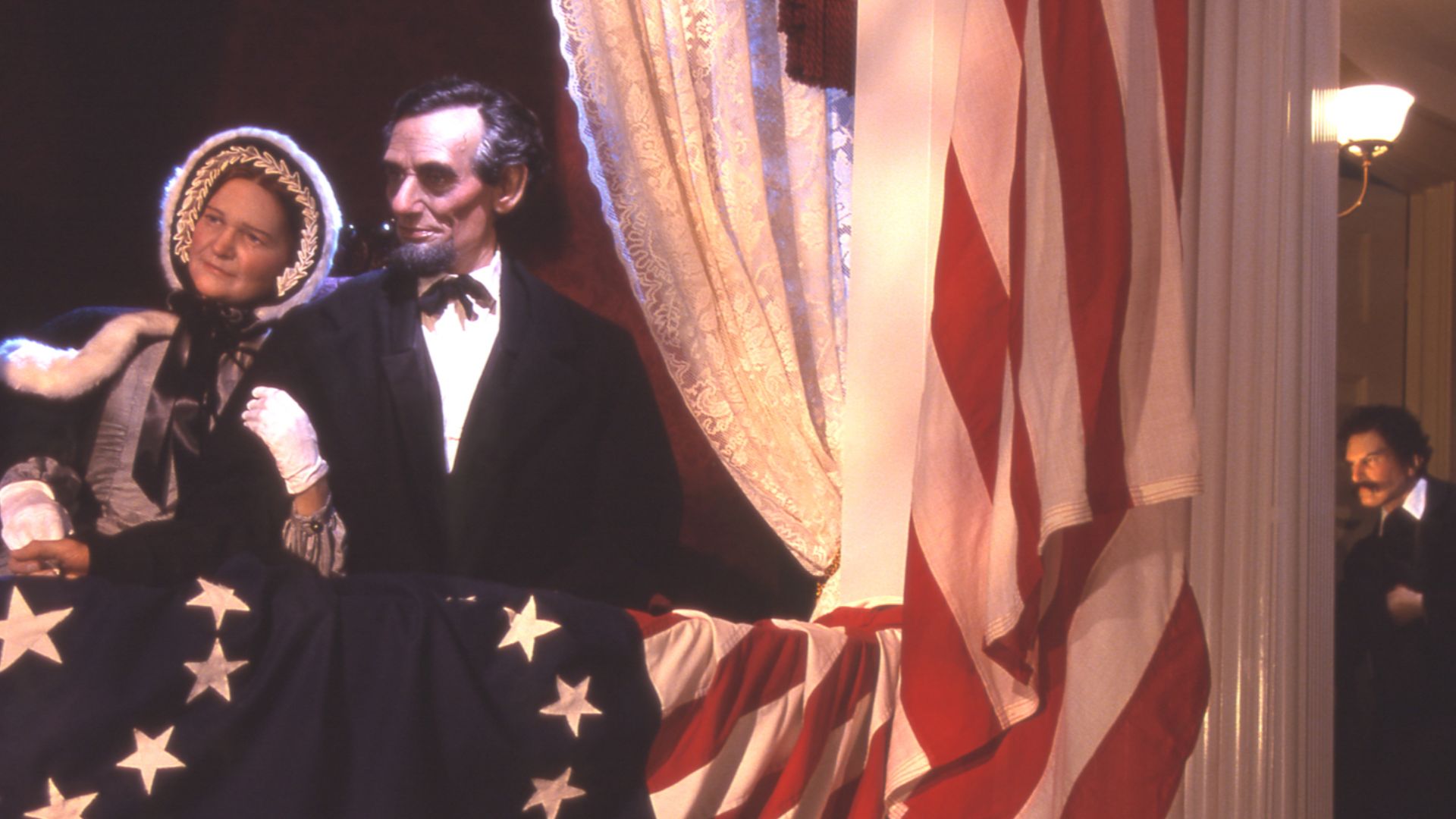 User talk:Winonave, Wikimedia Commons
User talk:Winonave, Wikimedia Commons
Sharecropping Trapped Freed Families In Endless Debt
After slavery ended, many freed people stayed on plantations, now as sharecroppers. They farmed land they didn't own and traded crops for shelter and supplies. Promises of independence turned into cycles of debt and control. Freedom was real, but economic survival remained tangled in old systems with new names.
Black Churches And Schools Rose During Reconstruction
Across the South, newly freed communities built churches and opened schools. These were sanctuaries of self-determination. Ministers became leaders, and teachers became heroes. In the face of violence and hostility, these spaces offered hope and a way to shape a freer future.
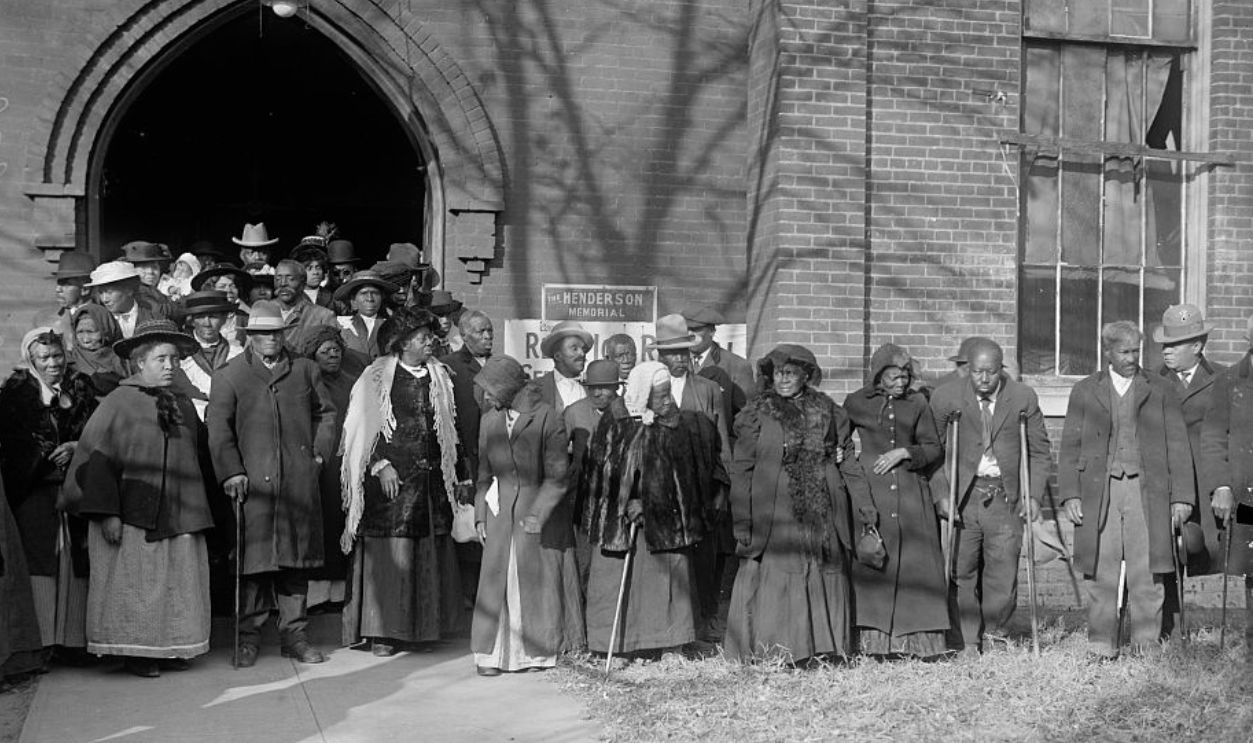 Washington Area Spark, Wikimedia Commons
Washington Area Spark, Wikimedia Commons
Federal Troops Enforced And Then Abandoned Reconstruction
After the fight, federal troops occupied Southern states to enforce civil rights. Progress followed, but it didn't last. When the troops withdrew in 1877, protection vanished. White supremacist groups surged, and Black voters were silenced. The dream of a new South faded as old powers reclaimed their grip.
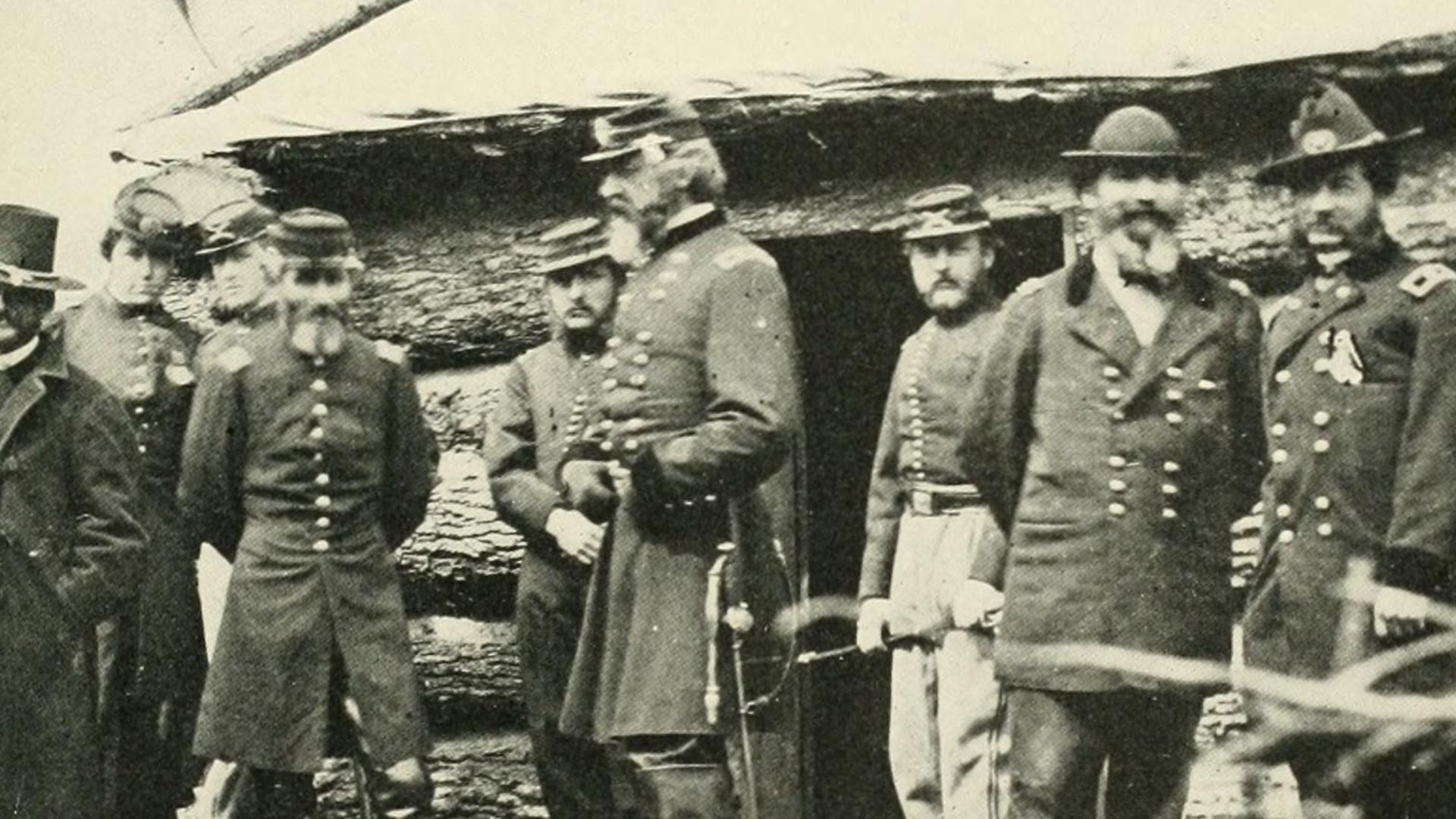 Internet Archive Book Images, Wikimedia Commons
Internet Archive Book Images, Wikimedia Commons
The Transcontinental Railroad United Oceans With Steel
Finished in 1869, the railroad connected the Atlantic to the Pacific. It decreased travel time and tied distant states together. But it came at a cost: dangerous labor and displaced tribes. Still, with every spike driven, the idea of a truly continental nation took shape.
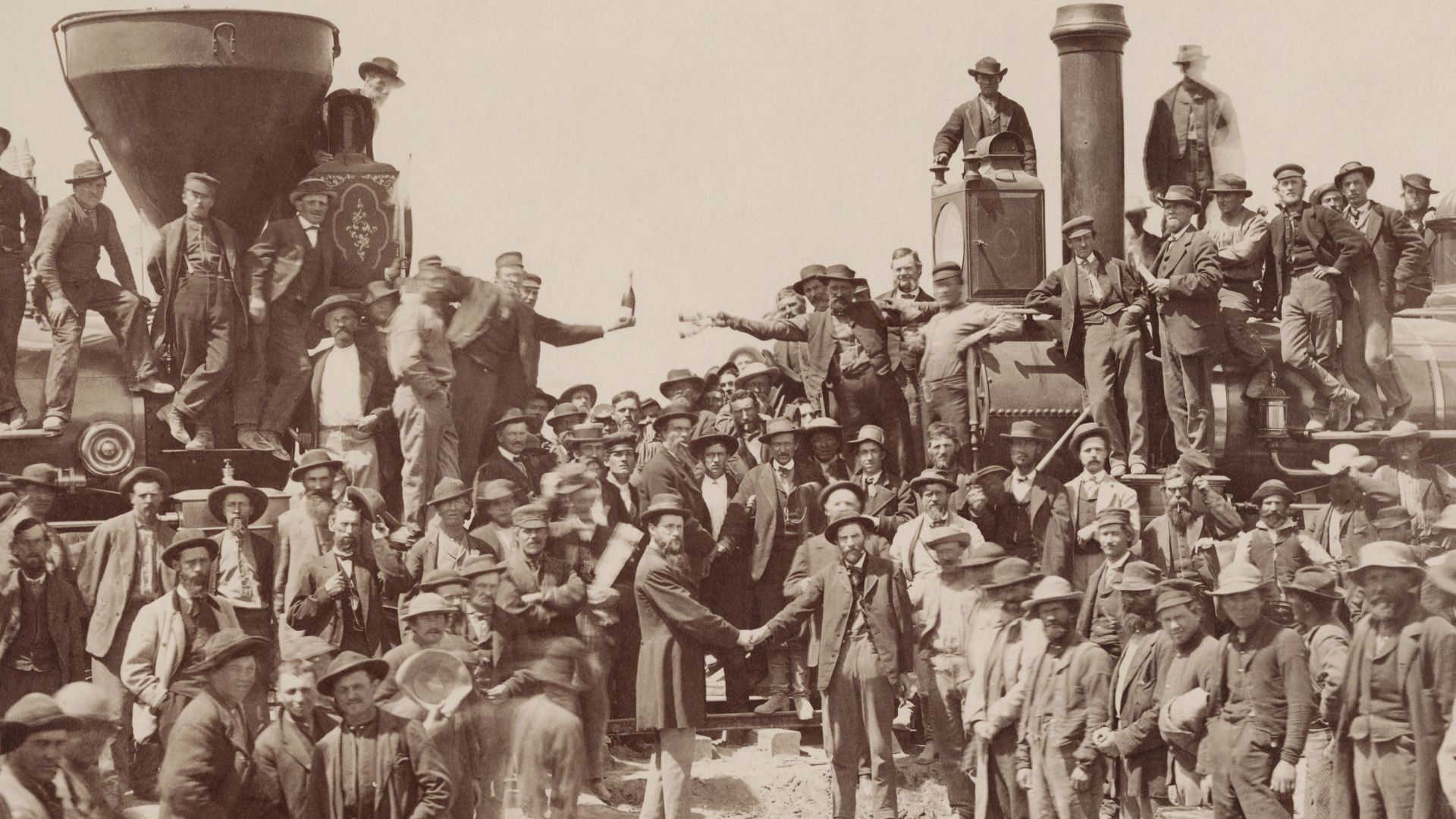 Andrew J. Russell / Adam Cuerden, Wikimedia Commons
Andrew J. Russell / Adam Cuerden, Wikimedia Commons
Barbed Wire Ended The Era Of Open-Range Cowboys
Before fences, cowboys herded cattle across open plains. That changed when barbed wire crisscrossed the West. Suddenly, land was claimed, and the cowboy's freedom shrank. The wide-open frontier turned private, and the untamed prairie became a patchwork of fences and farms.
Homesteaders Battled Drought And Isolation
The Homestead Act offered land to those willing to farm it, but life on the plains wasn't easy. Settlers faced blistering sun and crop failures. Homes were often made of sod and survival meant grit and stubborn hope. Some made it. However, others packed up and walked away.
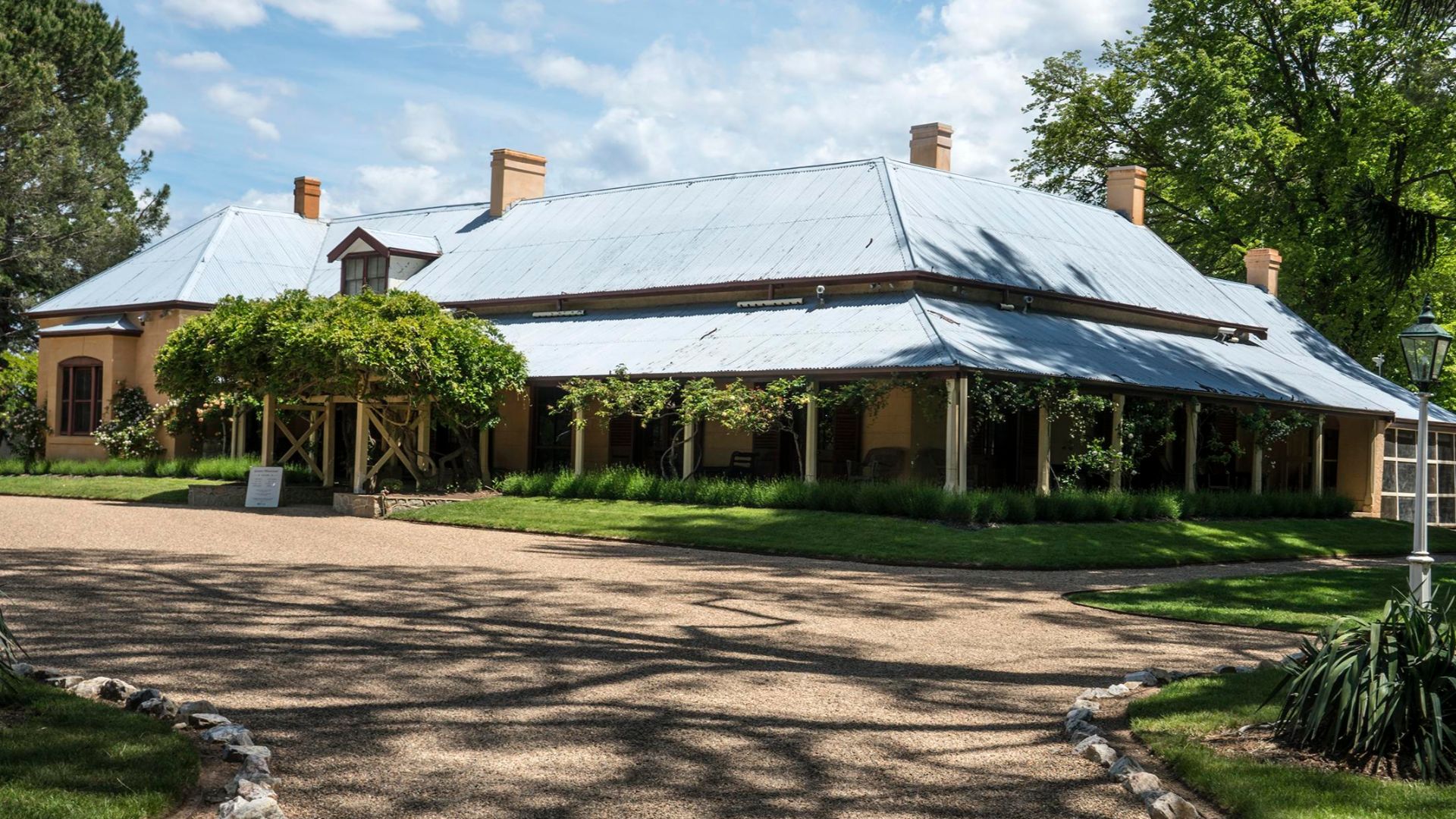 Sheba_Also 43,000 photos, Wikimedia Commons
Sheba_Also 43,000 photos, Wikimedia Commons
Gilded Age Mansions Sparkled Amid Deepening Inequality
Steel and oil tycoons built grand estates that dazzled with marble and gold. Meanwhile, millions lived in cramped tenements and scraped by. The Gilded Age looked rich on the surface, but cracks showed beneath. Lavish parties masked labor unrest and a growing gulf between haves and have-nots.
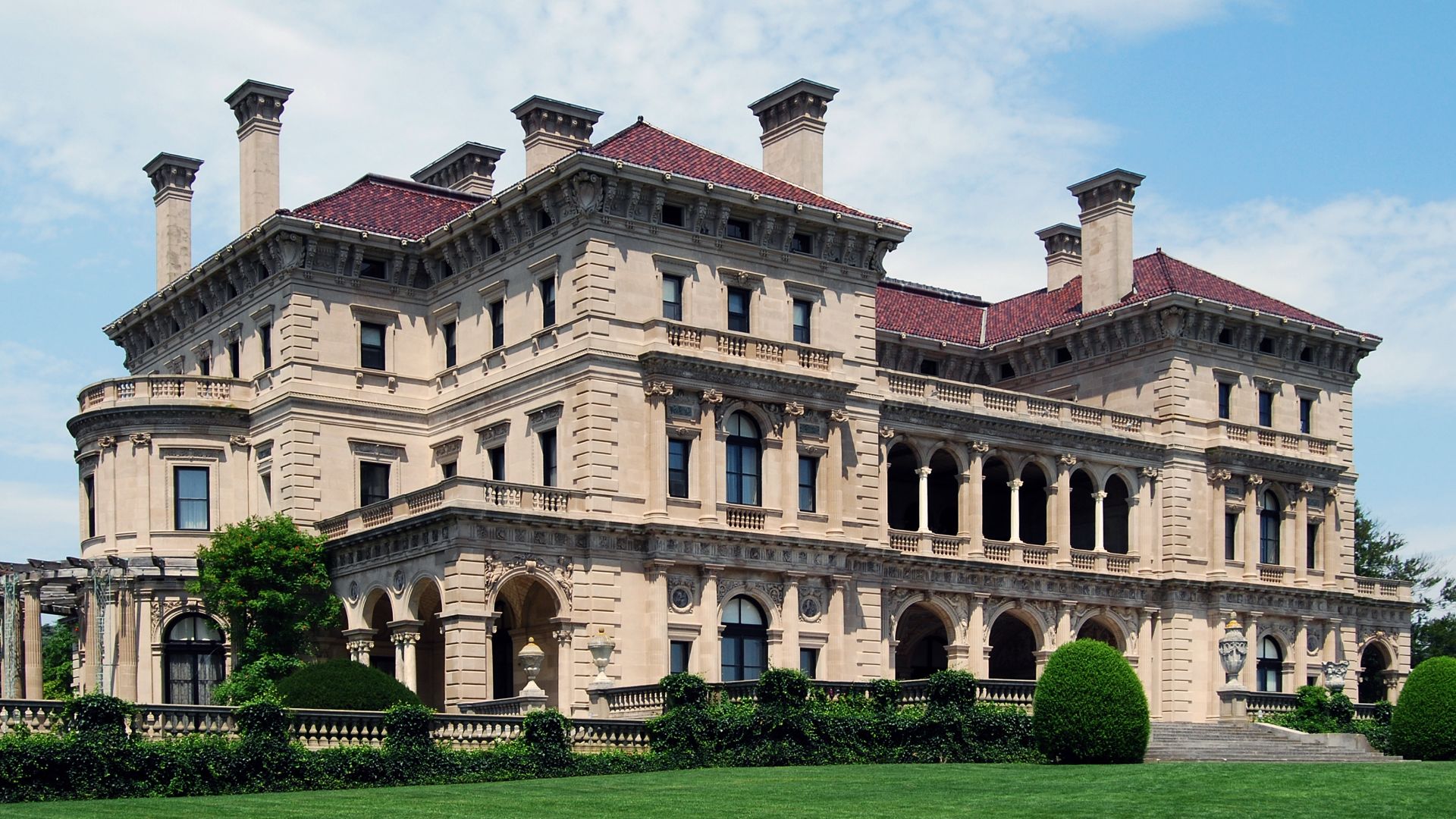 UpstateNYer, Wikimedia Commons
UpstateNYer, Wikimedia Commons
Suffragists Organized And Protested For The Vote
By the late 1800s, women weren't waiting quietly. They marched and gave speeches in streets and halls. Leaders like Susan B Anthony demanded the right to vote. Opposition was fierce, but so was persistence. The fight would last decades, but the foundation was built by these early campaigners.
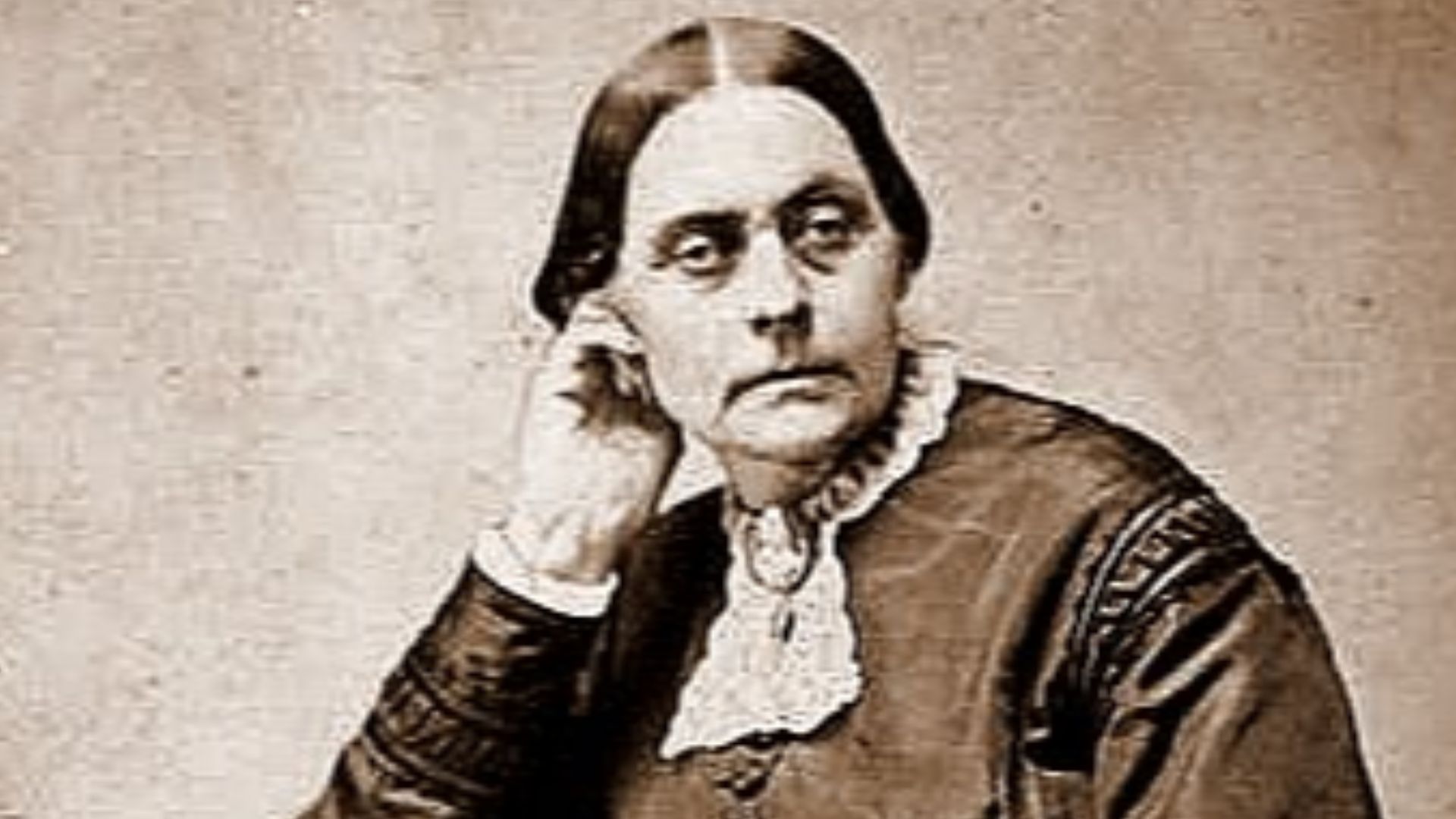 Stmarygypsy, Wikimedia Commons
Stmarygypsy, Wikimedia Commons
Mail-Order Catalogs Brought The World To The Farmhouse
Before Amazon, there was Sears. Rural families flipped through thick catalogs and ordered everything from tools to corsets. Trains delivered packages to remote towns, shrinking the gap between cities and the countryside. For isolated households, catalogs meant choice and a feeling of connection to a modernizing world.
Titans Of Industry Created Empires And Controversy
Names like Carnegie and Vanderbilt became synonymous with wealth. They built monopolies and reshaped markets. While admirers called them captains of industry, critics called them robber barons. These powerful men left skyscrapers and universities behind, but also fueled fierce debates over fairness.
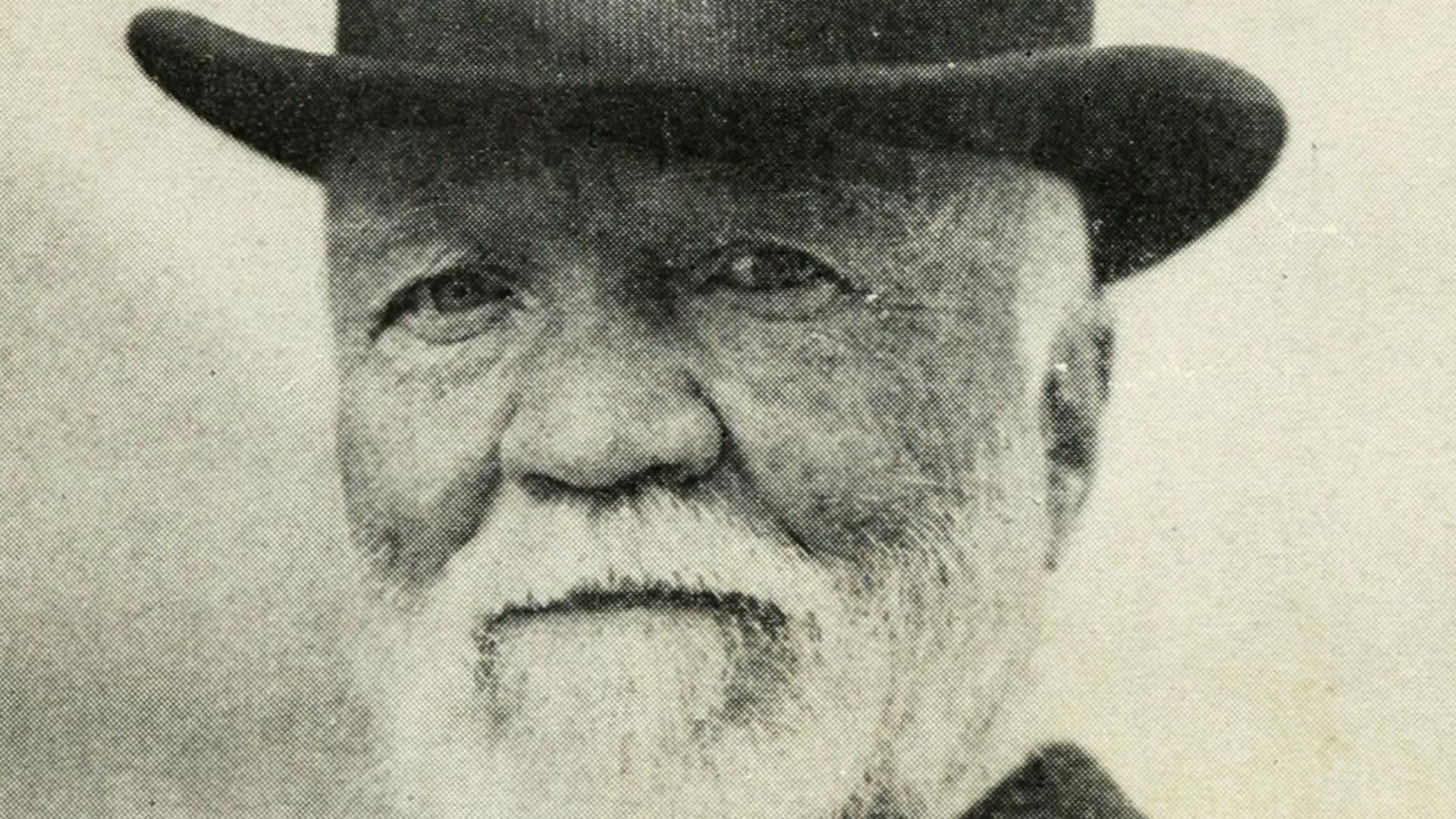 Internet Archive Book Images, Wikimedia Commons
Internet Archive Book Images, Wikimedia Commons
Alexander Graham Bell's Telephone Changed Communication Forever
When Bell made his first call in 1876, the world got a little smaller. Voices traveled over wires to connect homes and businesses. No more waiting on letters or telegraphs. The telephone made distance feel different, and life began moving faster. Soon, operators and switchboards became part of everyday life.
Jim Crow Laws Institutionalized Segregation In The South
After Reconstruction, Southern states passed laws that separated Black and white Americans in schools, trains, shops, and even cemeteries. Jim Crow laws turned racism into a daily routine, backed by courts and violence. Equality promised after the Civil War slipped further out of reach.
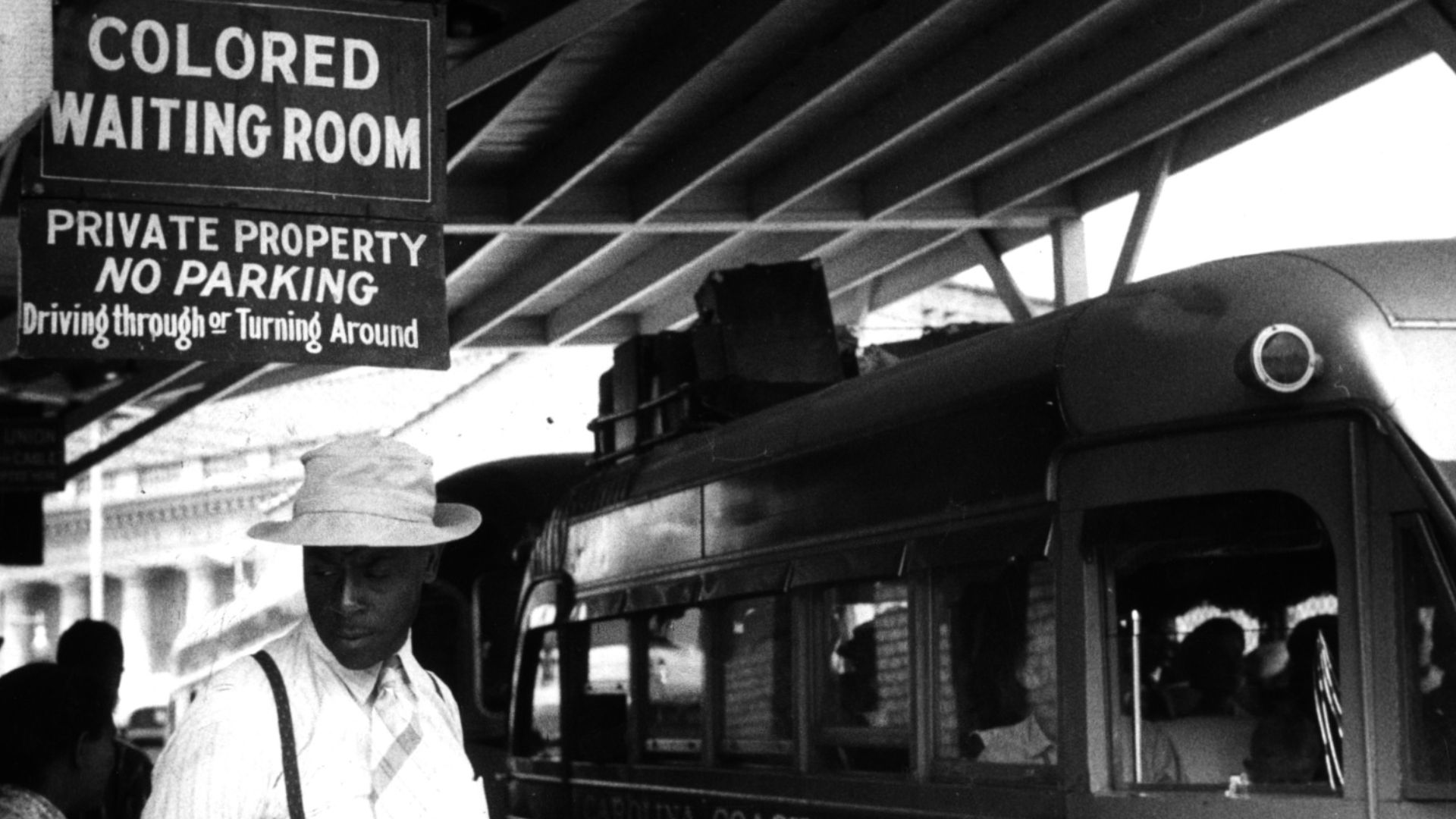 Jack Delano, Wikimedia Commons
Jack Delano, Wikimedia Commons
Electricity Lit Up America's Cities And Factories
Towards the end of the 19th century, lightbulbs replaced candles, and streetlamps glowed after dark. Factories ran longer, and cities shimmered at night. Electricity was a revolution as wires stretched across rooftops to power progress. With each flick of a switch, daily life became faster and brighter.
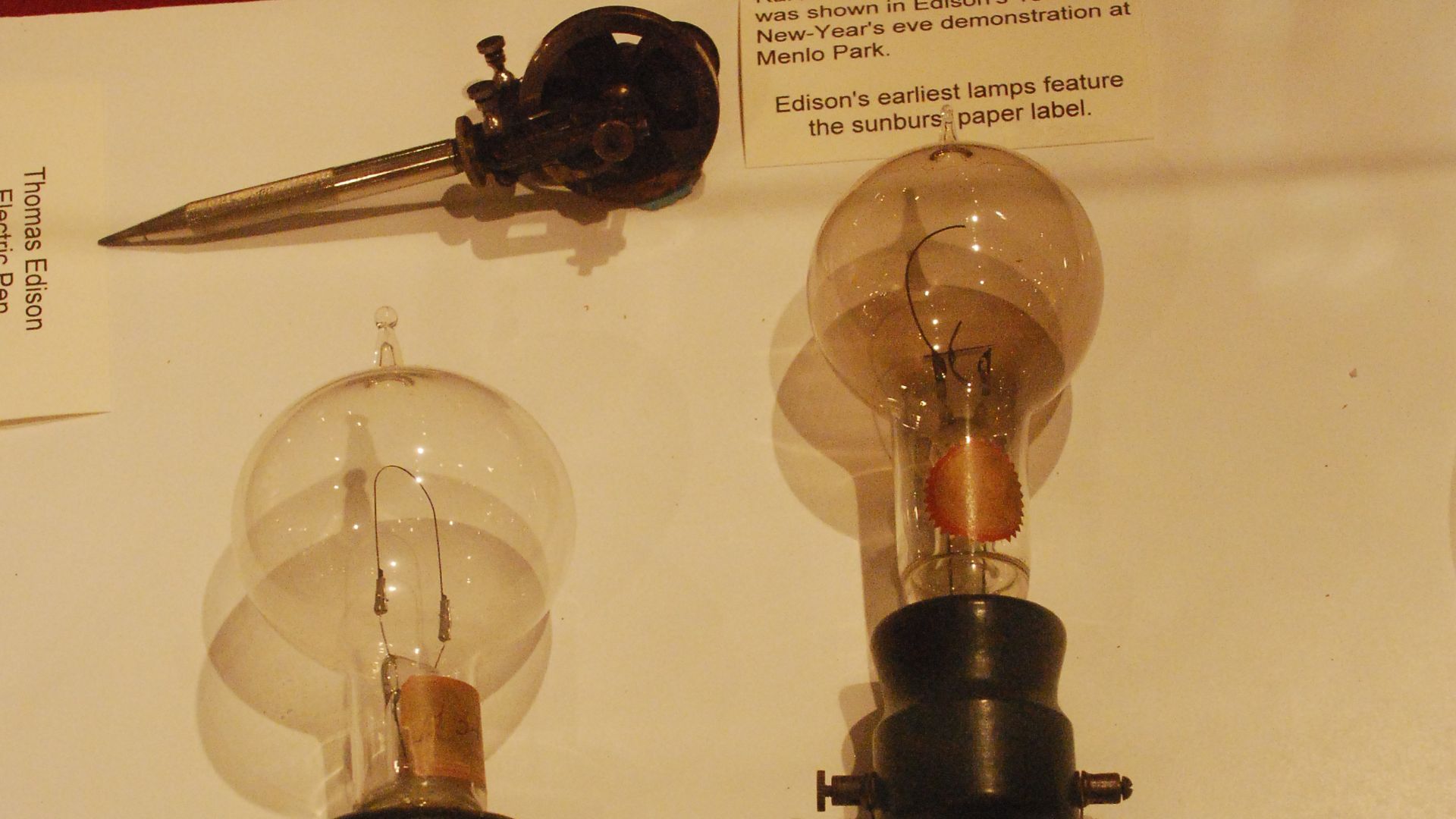 HumanisticRationale at English Wikipedia, Wikimedia Commons
HumanisticRationale at English Wikipedia, Wikimedia Commons
The Chicago World's Fair Dazzled A Modernizing Nation
In 1893, Chicago hosted a grand exposition that showed off America's future by featuring new inventions that wowed millions. It was part spectacle, part statement. The White City symbolized innovation and possibility. Amid celebration, it also revealed the growing divide between American ambition and its social reality.
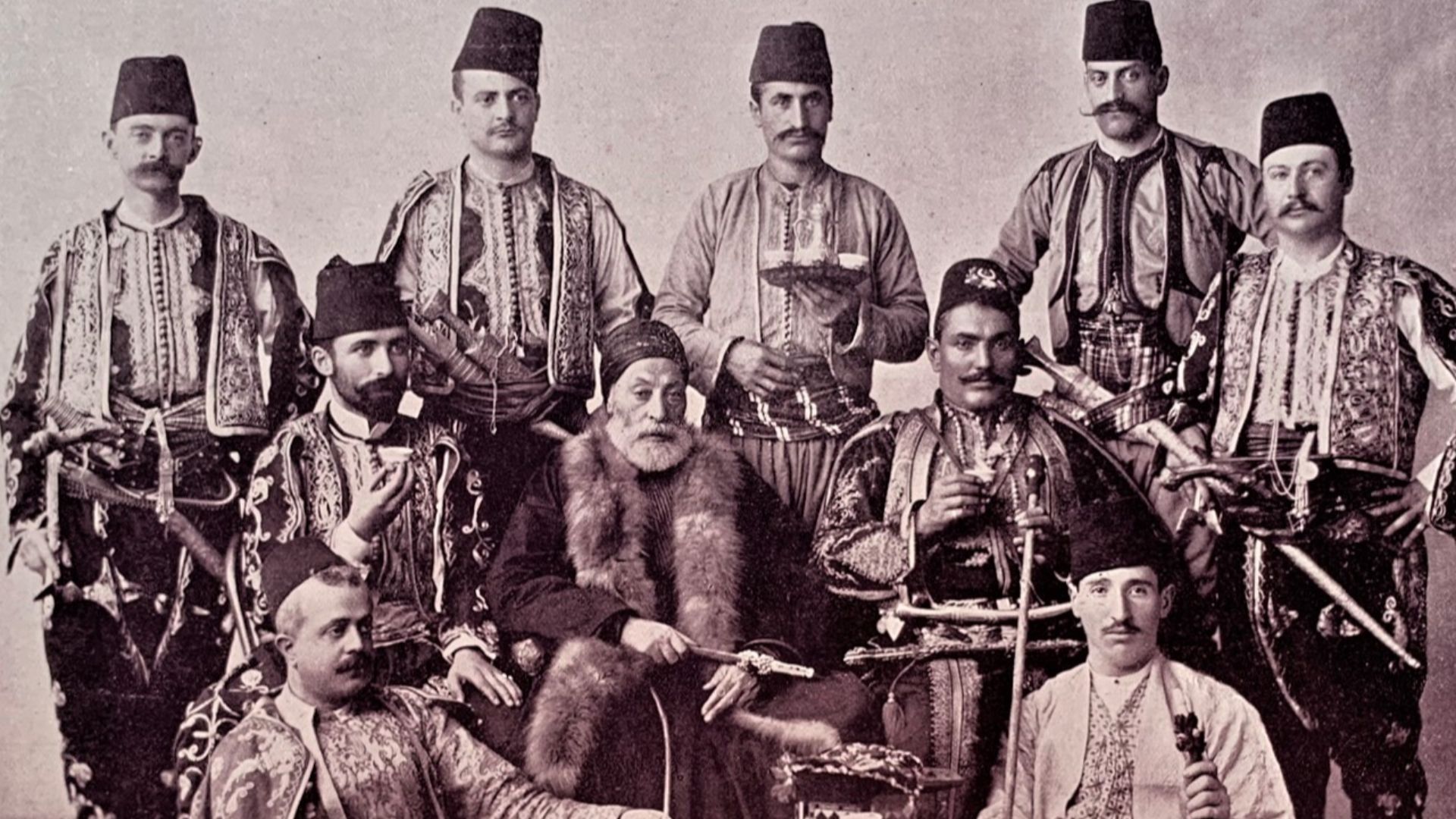 Aussie~mobs, Wikimedia Commons
Aussie~mobs, Wikimedia Commons
Streetcars And Skyscrapers Reshaped City Life
Cities stretched upward and outward. Skyscrapers changed skylines, and electric streetcars connected distant neighborhoods. Daily routines shifted as people commuted and shopped downtown easily. Urban life grew busier and more connected, and city life began to define modern America.
Public Parks Gave City Dwellers A Breath Of Fresh Air
As urban life grew crowded, reformers pushed for green spaces and Central Park in New York set the standard. Parks gave children space to play and workers room to rest. These public spots reminded Americans that even in a fast-paced world, nature still had a place.

